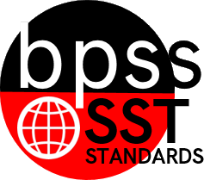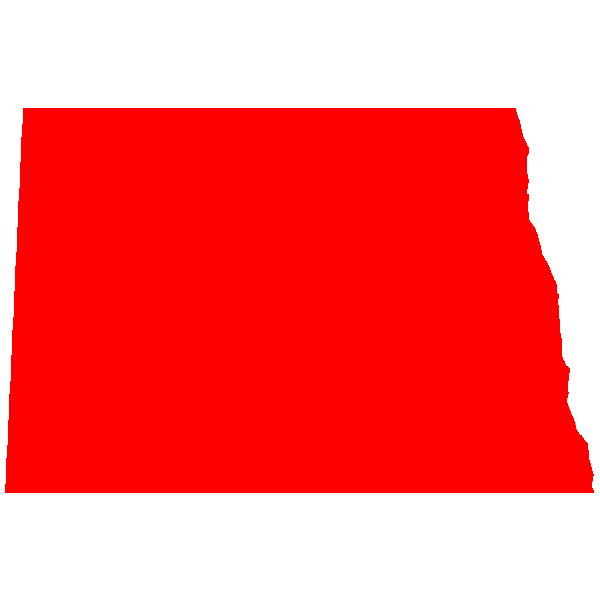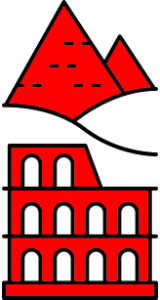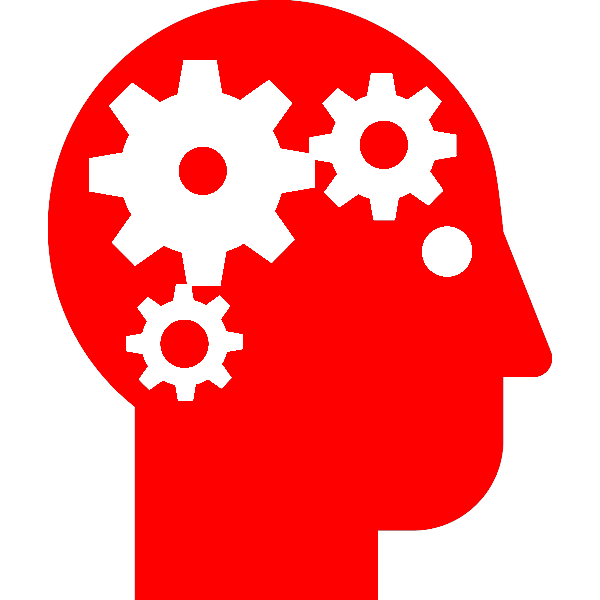BPS District Social Studies Standards Book
| Site: | Learnbps |
| Class: | BPSS (SST) Social Studies Standards |
| Book: | BPS District Social Studies Standards Book |
| Printed by: | Guest user |
| Date: | Sunday, November 23, 2025, 4:42 AM |
Social Studies Introduction
The BPSS (SST) Social Studies Standards course in Learnbps is Bismarck Public School District's current progress on prioritizing and deconstructing standards to provide a consistent, clear understanding of what students are expected to learn. The standards are designed to provide guidance so teachers and parents know what they need to do to help students. Plus help students reflect on the knowledge and skills that they need for success.
Identifier Explanation
SST-01.G.K_2.01
The Bismarck Public School District Standards-Based Progress Report displays grades at the concept level. Therefore Bismarck Public School District has modified the North Dakota DPI Identifiers to fit into our student information system PowerSchool for Standards-Based grading. Above is a BPS-Standards SST identifier with smaller muted text showing the addition to the identifier that are the components that BPS adds to the State code.
SST-00.G.01 | SST-01.G.01 | SST-02.G.01
click on the identifier components for more explanations
SST-01.G.01 Construct maps, graphs, and other representations that contain symbols, labels, and legends.
Note how the identifiers auto-link to the standards global glossaries.
Social Studies Standards Global Glossaries
Restore 18.9 MB
Navigation
SST Book Navigation
Below is a screenshot of the first page of the (SST) Social Studies Standards Book.
Press on the H5P interactive hotspots to learn more about how to navigate the book module in Learnbps. A popup will display the header and the explanation.
Note: Fullscreen option
K-12 Grade Bands
 Vision
Vision
In order to prepare for an ever changing world, teachers will immerse students in purposeful, engaging learning experiences to cultivate responsible and open-minded citizens.
 Vision
Vision
In order to prepare ....
K-2 Grade Levels

K-2 Standards
"I can ... statements"
![]()
![]()
![]()
![]()
 A high-quality Social Studies program is essential for all students. It provides a foundation for intelligent and precise thinking. Social Studies should also prepare every student to contribute to society as an informed citizen. To be a responsible and productive member of today’s society, a student needs to have a broad, connected, and useful knowledge of Social Studies.
A high-quality Social Studies program is essential for all students. It provides a foundation for intelligent and precise thinking. Social Studies should also prepare every student to contribute to society as an informed citizen. To be a responsible and productive member of today’s society, a student needs to have a broad, connected, and useful knowledge of Social Studies.
![]() With
With
Kindergarten Standards, your child will be studying about themselves.
![]() In
In
1st Grade Standards, your child will be studying about their school and family .
![]() In
In
2nd Grade Standards, your child will be studying about their community.
SST-K_2.C Civics Domain
Origin, Purpose, and Function
- SST-00.C.01 | SST-01.C.01 | SST-02.C.01
Explain reasons for, and purposes of, rules, laws, and positions of authority. - SST-00.C.02 | SST-01.C.02 | SST-02.C.02
Explain why people form governments. - SST-00.C.03 | SST-01.C.03 | SST-02.C.03
Identify services provided by the local government and how they affect the lives of its citizens/residents. - SST-00.C.04 | SST-01.C.04 | SST-02.C.04
Describe the core values represented by symbols of the United States.
Roles and Involvement of United States Citizens and Residents
- SST-00.C.05 | SST-01.C.05 | SST-02.C.05
Identify ways citizens and/or residents participate in community decisions. - SST-00.C.06 | SST-01.C.06 | SST-02.C.06
Describe important rights and responsibilities of citizens/ residents. - SST-00.C.07 | SST-01.C.07 | SST-02.C.07
Explain and/or participate in a project to help or inform others about an issue.
SST-K_2.E Economics Domain
Exchange and Markets
- SST-00.E.01 | SST-01.E.01 | SST-02.E.01
Describe the characteristics of the American economic system. - SST-00.E.02 | SST-01.E.02 | SST-02.E.02
Compare and contrast producers and consumers of goods and services. - SST-00.E.03 | SST-01.E.03 | SST-02.E.03
Identify consumer decisions and the difference between needs and wants. - SST-00.E.04 | SST-01.E.04 | SST-02.E.04
Identify how community helpers impact others.
National Economy
- SST-00.E.05 | SST-01.E.05 | SST-02.E.05
Explain how people earn income and save money.
SST-K_2.G Geography Domain
Geographical Representation
Geographical Representation
- SST-00.G.1 | SST-01.G.1 | SST-02.G.1
Construct maps, graphs, and other representations that contain symbols, labels, and legends. - SST-0.G.02 | SST-1.G.02 | SST-2.G.02
Begins in Grade 3 - SST-0.G.03 | SST-1.G.03 | SST-2.G.03
Begins in Grade 3
Human and Environment Interactions
Human and Environment Interactions
- SST-00.G.2 | SST-01.G.2 | SST-02.G.2
Describe how the physical environment affects people and how people affect the environment. - SST-00.G.05 | SST-01.G.05 | SST-02.G.05
Begins in Grade 3 - SST-00.G.06 | SST-01.G.06 | SST-02.G.06
Begins in Grade 3
Human Population
Human Population
- SST-0.G.07 | SST-1.G.07 | SST-2.G.07
Begins in Grade 3 - SST-0.G.08 | SST-1.G.08 | SST-2.G.08
Begins in Grade 3
SST-K_2.H History Domain
Perspectives
Perspectives
- SST-00.H.1 | SST-01.H.1 | SST-02.H.1
Compare perspectives of people in the past to those of people in the present. - SST-0.H.02 | SST-1.H.02 | SST-2.H.02
Begins in Grade 3 - SST-0.H.03 | SST-1.H.03 | SST-2.H.03
Begins in Grade 3
Cause-Effect & Current Events
Cause-Effect & Current Events
- SST-00.H.2 | SST-01.H.2 | SST-02.H.2
Describe United States national holidays or days of observance and the reason they are celebrated. - SST-00.H.3 | SST-01.H.3 | SST-02.H.3
Describe current events.
Connections, Contributions, Historical Source & Evidence
Connections, Contributions, Historical Source & Evidence
- SST-00.H.4 | SST-01.H.4 | SST-02.H.4
Demonstrate chronological thinking by describing changes in the community over time. - SST-00.H.5 | SST-01.H.5 | SST-02.H.5
Explain how individuals and groups have made significant historical changes. - SST-0.H.08 | SST-1.H.08 | SST-2.H.08
Begins in Grade 3 - SST-0.H.09 | SST-1.H.09 | SST-2.H.09
Begins in Grade 3
3-5 Grade Levels

3-5 Standards
"I can ... statements"
![]()
![]()
![]()
![]()
 A high-quality Social Studies program is essential for all students. It provides a foundation for intelligent and precise thinking. Social Studies should also prepare every student to contribute to society as an informed citizen. To be a responsible and productive member of today’s society, a student needs to have a broad, connected, and useful knowledge of Social Studies.
A high-quality Social Studies program is essential for all students. It provides a foundation for intelligent and precise thinking. Social Studies should also prepare every student to contribute to society as an informed citizen. To be a responsible and productive member of today’s society, a student needs to have a broad, connected, and useful knowledge of Social Studies.
![]() With
With
3rd Grade Standards, your child will be studying about their community and beyond.
![]() With
With
4th Grade Standards, your child will be studying about North Dakota.
![]() With
With
5th Grade Standards, your child will be studying about America's past.
SST-3_5.C Civics Domain
Origin, Purpose, and Function
- SST-03.C.01 | SST-04.C.01 | SST-05.C.01
Compare and contrast the responsibilities and powers of government officials at various levels and branches of government. - SST-03.C.02 | SST-04.C.02 | SST-05.C.02
Describe the structure of government and how it functions to serve citizens/residents. - SST-03.C.03 | SST-04.C.03 | SST-05.C.03
 Describe the structure of governments in North Dakota and how they function to serve citizens & residents.
Describe the structure of governments in North Dakota and how they function to serve citizens & residents. - SST-03.C.04 | SST-04.C.04 | SST-05.C.04
Explain the importance of the basic principles that provide the foundation of the American system of government. (e.g. Amendments, Constitution, symbols, patriotic traditions, government leaders, etc.)
Roles and Involvement of United States Citizens and Residents
- SST-03.C.05 | SST-04.C.05 | SST-05.C.05
Describe procedures for making decisions in a variety of settings. - SST-03.C.06 | SST-04.C.06 | SST-05.C.06
Compare and contrast personal and civic responsibilities and explain why they are important in community life. - SST-03.C.07 | SST-04.C.07 | SST-05.C.07
Develop and implement an action plan to address or inform others about an issue.
SST-3_5.E Economics Domain
Exchange and Markets
- SST-03.E.01 | SST-04.E.01 | SST-05.E.01
Utilize fundamental principles and concepts of economics to understand economic activity. - SST-03.E.02 | SST-04.E.02 | SST-05.E.02
Describe how goods and services are produced and distributed. - SST-03.E.03 | SST-04.E.03 | SST-05.E.03
Identify factors that influence saving and spending choices. - SST-03.E.04 | SST-04.E.04 | SST-05.E.04
Describe the necessity and impact of community services.
National Economy
- SST-03.E.05 | SST-04.E.05 | SST-05.E.05
 Describe & analyze how North Dakota’s location, culture, and natural resources influence its economic decisions and development.
Describe & analyze how North Dakota’s location, culture, and natural resources influence its economic decisions and development. - SST-03.E.06 | SST-04.E.06 | SST-05.E.06
Compare and contrast the economic development of the geographical regions of the United States. - SST-03.E.07 | SST-04.E.07 | SST-05.E.07
Explain how natural resources affect the economies of the geographical regions of the United States. - SST-03.E.08 | SST-04.E.08 | SST-05.E.08
Describe how economics have changed over time.
SST-3_5.G Geography Domain
Geographical Representation
- SST-03.G.01 | SST-04.G.01 | SST-05.G.01
Construct maps, graphs, and other representations of both familiar and unfamiliar places. - SST-03.G.02 | SST-04.G.02 | SST-05.G.02
Use geographic tools and technologies to acquire, process and report information from a spatial perspective. - SST-03.G.03 | SST-04.G.03 | SST-05.G.03
Use maps, satellite images, photographs, and other representations to explain relationships between the locations of places and regions and their environmental characteristics.
Human and Environment Interactions
- SST-03.G.04 | SST-04.G.04 | SST-05.G.04
 Explain how North Dakota regions have been influenced by physical and human characteristics.
Explain how North Dakota regions have been influenced by physical and human characteristics. - SST-03.G.05 | SST-04.G.05 | SST-05.G.05
 Compare and contrast the three geographical regions of North Dakota.
Compare and contrast the three geographical regions of North Dakota. - SST-03.G.06 | SST-04.G.06 | SST-05.G.06
Explain how United States regions are created from common physical and human characteristics.
Human Population
- SST-03.G.07 | SST-04.G.07 | SST-05.G.07
 Analyze patterns of human settlement in North Dakota.
Analyze patterns of human settlement in North Dakota. - SST-03.G.08 | SST-04.G.08 | SST-05.G.08
Analyze patterns of human settlement in North America.
SST-3_5.H History Domain
Perspectives
- SST-03.H.01 | SST-04.H.01 | SST-05.H.01
Compare and contrast multiple perspectives during the same time period, event, or historical period. - SST-03.H.02 | SST-04.H.02 | SST-05.H.02
Describe how people’s perspectives shape history. - SST-03.H.03 | SST-04.H.03 | SST-05.H.03
 Describe the North Dakota Native American Essential Understandings.
Describe the North Dakota Native American Essential Understandings.
Cause-Effect & Current Events
- SST-03.H.04 | SST-04.H.04 | SST-05.H.04
Analyze United States national holidays or days of observance and the impact on the culture of the United States. - SST-03.H.05 | SST-04.H.05 | SST-05.H.05
 Describe multiple causes and effects of contemporary global events and developments in relation to North Dakota.
Describe multiple causes and effects of contemporary global events and developments in relation to North Dakota. - SST-03.H.06 | SST-04.H.06 | SST-05.H.06
Describe multiple causes and effects of contemporary global events and developments in relation to the United States.
Connections, Contributions, Historical Source & Evidence
- SST-03.H.07 | SST-04.H.07 | SST-05.H.07
Explain cause and effect relationships among historical events in the United States using primary and secondary sources.
- SST-03.H.08 | SST-04.H.08 | SST-05.H.08
Explain how individuals contributed to the United States throughout different historical eras using primary and secondary sources. - SST-03.H.09 | SST-04.H.09 | SST-05.H.09
 Explain how individuals and groups contributed to North Dakota.
Explain how individuals and groups contributed to North Dakota. - SST-03.H.10 | SST-04.H.10 | SST-05.H.10
 Describe the events and developments that led to the statehood of North Dakota.
Describe the events and developments that led to the statehood of North Dakota.
- 3rd Grade Prioritized
A high-quality Social Studies program is essential for all students. It provides a foundation for intelligent and precise thinking. Social Studies should also prepare every student to contribute to society as an informed citizen. To be a responsible and productive member of today’s society, a student needs to have a broad, connected, and useful knowledge of Social Studies.
Note: Prioritized Standards Identifiers are auto-link to popup a detailed description with Proficiency Scales and other details.
 SST-03.C: Civics & Government (C)
SST-03.C: Civics & Government (C)
- SST-03.C.01 Compare and contrast the responsibilities and powers of government officials at various levels and branches of government.
- SST-03.C.02 Describe the structure of government and how it functions to serve citizens/residents.
- SST-03.C.05 Describe procedures for making decisions in a variety of settings.
- SST-03.C.06 Compare and contrast personal and civic responsibilities and explain why they are important in community life.
 SST-03.G: Geography (G)
SST-03.G: Geography (G)
- SST-03.G.01 Construct maps, graphs, and other representations of both familiar and unfamiliar places.
- SST-03.G.02 Use geographic tools and technologies to acquire, process and report information from a spatial perspectives.
 SST-03.E: Economics (E)
SST-03.E: Economics (E)
- SST-03.E.01 Utilize fundamental principles and concepts of economics to understand economic activity.
- SST-03.E.02 Describe how goods and services are produced and distributed.
- SST-03.E.03 Identify factors that influence saving and spending choices.
- SST-03.E.04 Describe the necessity and impact of community services.
 SST-03.H: History (H)
SST-03.H: History (H)
- SST-03.H.01 Compare and contrast multiple perspectives during the same time period, event, or historical period.
- SST-03.H.04 Analyze United States national holidays or days of observance and the impact on the culture of the United States.
6-8 Grade Level
 A high-quality Social Studies program is essential for all students. It provides a foundation for intelligent and precise thinking. Social Studies should also prepare every student to contribute to society as an informed citizen. To be a responsible and productive member of today’s society, a student needs to have a broad, connected, and useful knowledge of Social Studies.
A high-quality Social Studies program is essential for all students. It provides a foundation for intelligent and precise thinking. Social Studies should also prepare every student to contribute to society as an informed citizen. To be a responsible and productive member of today’s society, a student needs to have a broad, connected, and useful knowledge of Social Studies.
![]() With
With
6th Grade Standards, your child will be studying about the western civilizations.
![]() With
With
7th Grade Standards, your child will be studying about North Dakota.
![]() With
With
8th Grade Standards, your child will be studying about America's past and ND Studies.
SST-MS.C Civics Domain
SST-MS.C.01 Explain the historical and philosophical foundations of government.
- SST-06.C.01.1 | SST-07.C.01.1 | SST-08.C.01.1
Evaluate the thoughts of major political philosophers. - SST-06.C.01.2 | SST-07.C.01.2 | SST-08.C.01.2
Explain the influence of British and colonial history on early America. - SST-06.C.01.3 | SST-07.C.01.3 | SST-08.C.01.3
Evaluate the creation and impact of primary sources on political thought in the United States.
SST-MS.C.02 Analyze the structures and functions of governments.
- SST-06.C.02.1 | SST-07.C.02.1 | SST-08.C.02.1
Differentiate/compare forms and origins of governments. - SST-06.C.02.2 | SST-07.C.02.2 | SST-08.C.02.2
Examine the role and purposes of government. - SST-06.C.02.3 | SST-07.C.02.3 | SST-08.C.02.3
Analyze the structure, principles, and interpretation of the Constitution of the United States. - SST-06.C.02.4 | SST-07.C.02.4 | SST-08.C.02.4
Explain the relationship among federal, state, tribal, and local governmental powers. - SST-06.C.02.5 | SST-07.C.02.5 | SST-08.C.02.5
Explain the purposes, organization, powers, and processes of tribal and local governments.
SST-MS.C.03 Describe the rights and liberties of individuals.
- SST-06.C.03.1 | SST-07.C.03.1 | SST-08.C.03.1
Describe and examine the amendments to the United States Constitution and their application in the United States. - SST-06.C.03.2 | SST-07.C.03.2 | SST-08.C.03.2
Describe the impact of court cases on rights and liberties of individuals.
SST-MS.C.04 Investigate the role and responsibilities of citizenship in society.
- SST-06.C.04.1 | SST-07.C.04.1 | SST-08.C.04.1
Explain how citizens can influence government. - SST-06.C.04.2 | SST-07.C.04.2 | SST-08.C.04.2
Describe and evaluate the criteria and process for naturalization in the United States. - SST-06.C.04.3 | SST-07.C.04.3 | SST-08.C.04.3
Explain how citizens’ personal and civic responsibilities are important to the preservation and improvement of United States constitutional republic. - SST-06.C.04.4 | SST-07.C.04.4 | SST-08.C.04.4
Identify bias and evaluate its role in media sources. - SST-06.C.04.5 | SST-07.C.04.5 | SST-08.C.04.5
Demonstrate active participation in civic life.
SST-MS.E Economics Domain
SST-MS.E.01 Analyze the concept of scarcity when making economic decisions.
- SST-06.E.01.1 | SST-07.E.01.1 | SST-08.E.01.1
Analyze the basic concepts of economic thinking. - SST-06.E.01.2 | SST-07.E.01.2 | SST-08.E.01.2
Describe the difference between a command/centrally planned economy and market economy.
SST-MS.E.02 Compare and contrast how varying economic systems impact a nation and its citizens.
- SST-06.E.02.1 | SST-07.E.02.1 | SST-08.E.02.1
Describe the difference between a command/centrally planned economy and market economy.
SST-MS.E.03 Analyze how supply and demand impact the allocation of goods and services.
- SST-06.E.03.1 | SST-07.E.03.1 | SST-08.E.03.1
Explain the law of supply and demand. - SST-06.E.03.2 | SST-07.E.03.2 | SST-08.E.03.2
Compare and contrast perfect and imperfect competition. - SST-06.E.03.3 | SST-07.E.03.3 | SST-08.E.03.3
Analyze the impact of the supply and demand on prices.
SST-MS.E.04 Analyze the various institutions that drive and support the market economy.
- SST-06.E.04.1 | SST-07.E.04.1 | SST-08.E.04.1
Explain the role of businesses and financial institutions in a market economy. - SST-06.E.04.2 | SST-07.E.04.2 | SST-08.E.04.2
Evaluate the role of government in a market economy. - SST-06.E.04.3 | SST-07.E.04.3 | SST-08.E.04.3
Explain the functions and role of money.
SST-MS.E.05 Evaluate the various macroeconomic measurements available to determine an economy’s size and strength.
- SST-06.E.05.1 | SST-07.E.05.1 | SST-08.E.05.1
Describe various measurements of macroeconomics.
SST-MS.E.06 Analyze how globalization has impacted various aspects of economies around the world.
- SST-06.E.06.1 | SST-07.E.06.1 | SST-08.E.06.1
Describe how trade generates economic development and interdependence. - SST-06.E.06.2 | SST-07.E.06.2 | SST-08.E.06.2
Analyze the benefits and costs for individuals, producers, and governments in international trade.
SST-MS.E.07 Evaluate the elements of responsible personal finance.
- SST-06.E.07.1 | SST-07.E.07.1 | SST-08.E.07.1
Evaluate career choices and the effect on the standard of living. - SST-06.E.07.2 | SST-07.E.07.2 | SST-08.E.07.2
Evaluate the effect of taxes and other factors on income.
- SST-06.E.07.3 | SST-07.E.07.3 | SST-08.E.07.3
Develop short- and long-term financial goals. - SST-06.E.07.4 | SST-07.E.07.4 | SST-08.E.07.4
Analyze the cost and benefits of different types of credit and debt; and the rights and responsibilities of borrowers. - SST-06.E.07.5 | SST-07.E.07.5 | SST-08.E.07.5
Develop strategies to avoid and manage debt effectively.
SST-MS.G Geography Domain
SST-MS.G.01 Describe the physical processes that shape the Earth’s surface and how these affect the lives of people who live there.
- SST-06.G.01.1 | SST-07.G.01.1 | SST-08.G.01.1
Describe the physical processes that shape the Earth’s surface. - SST-06.G.01.2 | SST-07.G.01.2 | SST-08.G.01.2
Explain the factors that cause different types of climates and ecosystems, and their latitudes/locations. - SST-06.G.01.3 | SST-07.G.01.3 | SST-08.G.01.3
Identify how major ecosystems provide raw materials. - SST-06.G.01.4 | SST-07.G.01.4 | SST-08.G.01.4
Analyze the physical and human characteristics of a place. - SST-06.G.01.5 | SST-07.G.01.5 | SST-08.G.01.5
Describe how combinations of human decisions and natural forces can lead to (or help people avoid) a natural disaster.
SST-MS.G.02 Analyze the movement of people, goods, ideas, technology, etc. throughout the world.
- SST-06.G.02.1 | SST-07.G.02.1 | SST-08.G.02.1
Explain how movement of goods, information, and population are affected by technology. - SST-06.G.02.2 | SST-07.G.02.2 | SST-08.G.02.1
Describe patterns of settlement and explain why people settle where they do and how they make their living. - SST-06.G.02.3 | SST-07.G.02.3 | SST-08.G.02.1
Explain the patterns, causes, and consequences of major human migrations.
SST-MS.G.03 Analyze the unifying physical and human characteristics of a region and their formal and informal boundaries.
- SST-06.G.03.1 | SST-07.G.03.1 | SST-08.G.03.1
Describe the differences and similarities among cultures around the world. - SST-06.G.03.2 | SST-07.G.03.2 | SST-08.G.03.2
Analyze the physical and human characteristics of a region. - SST-06.G.03.3 | SST-07.G.03.3 | SST-08.G.03.3
Interpret how culture and experience influence people’s perception of places and regions. - SST-06.G.03.4 | SST-07.G.03.4 | SST-08.G.03.4
Identify factors that contribute to conflict and cooperation between cultural groups from multiple perspectives.
SST-MS.G.04 Use geographic tools to locate both the absolute and relative location of places and regions around the world.
- SST-06.G.04.1 | SST-07.G.04.1 | SST-08.G.04.1
Explain and use a variety of geographic tools to study the world on global, regional, and local scales and draw conclusions. - SST-06.G.04.2 | SST-07.G.04.2 | SST-08.G.04.2
Apply the skills of geographic inquiry to analyze a geographic problem or issue.
SST-MS.G.05 Analyze how human beings are dependent upon, adapt to, and modify their environment to meet their needs.
- SST-06.G.05.1 | SST-07.G.05.1 | SST-08.G.05.1
Explain how people have modified the environment and used technology to make places more suitable for humans. - SST-06.G.05.2 | SST-07.G.05.2 | SST-08.G.05.2
Analyze how human changes to the environment in one region or place can affect another.
SST-06.WH World History
SST-06.WH_a (A) Domain: World History Anchor Standards
- SST-06.WH_a.01 - Analyze historical achievements related to science and technology.
- SST-06.WH_a.02 - Explain historical changes related to religions and ideologies.
- SST-06.WH_a.03 - Analyze the effects of different political systems on people.
- SST-06.WH_a.04 - Analyze the influence of social, cultural, and economic developments on individuals.
- SST-06.WH_a.05 - Analyze causes and effects of global events in the past using primary and/or secondary sources.
- SST-06.WH_a.06 - Explain how past events connect to the present.
SST-06.WH_e1.b Era 1: Emergence of Civilizations and Religions Around the Globe
- SST-06.WH_e1.b1 Explain multiple achievements of civilizations and connect them to the present.
- SST-06.WH_e1.b2 Describe the belief systems or religions of early civilizations.
- SST-06.WH_e1.b3 Explain the impact of the development of agriculture on the social, cultural, and economic lives of individuals.
- SST-06.WH_e1.b4 Explain how political systems impacted the people in Greece and Rome and how those political systems connect to the present
SST-06.WH_e2.b Era 2: Middle Ages and the Renaissance
- SST-06.WH_e2.b1 Explain the causes and effects of Medieval social structures using primary and secondary sources.
- SST-06.WH_e2.b2 Explain how the relationship between religious and political bodies impacted the social, cultural, or economic developments of individuals.
- SST-06.WH_e2.b3 Explain the emergence of cultural interaction between Europe and other civilizations.
SST-08.US United States History
SST-08.US_a US History Anchor Domain
- SST-08.US_a.01 Analyze primary and secondary sources with attention to reliability, impact, and purpose.
- SST-08.US_a.02 Examine the impact of multiple perspectives on social, political, and cultural development.
- SST-08.US_a.03 Explain the relationship of events focusing on the link(s) between cause and effect.
- SST-08.US_a.04 Compare how historical elements change over time.
- SST-08.US_a.05 Analyze the significant contributions of people and policy, and the influence on an era.
- SST-08.US_a.06 Connect the past to the present using current events.
SST-08.US_e1.b (1754-1814) Era 1: Creation and Foundation of United States Government.
- SST-08.US_e1.b1 - Explain the social, political, and cultural causes and immediate consequences of the American Revolution.
- SST-08.US_e1.b2 - Explain the development of early United States government.
- SST-08.US_e1.b3 - Explain the development of United States society after the American Revolution.
- SST-08.US_e1.b4 - Explain the importance of foreign and domestic decisions of the early United States government, its leaders, and political parties.
SST-08.US_e2.b (1814-1877) Era 2: Growth and Division in the Union.
- SST-08.US_e2.b1 - Analyze the impacts of social, religious, and/or cultural movements.
- SST-08.US_e2.b2 - Compare and contrast how the causes of the sectional divide within the United States impacted federal policy.
- SST-08.US_e2.b3 - Explain how westward expansion affected the social, economic, and political landscape of the United States.
- SST-08.US_e2.b4 - Explain the changing Native American federal policy and the impact on tribal sovereignty.
- SST-08.US_e2.b5 - Explain the social, economic, and political causes and effects of the Civil War.
- SST-08.US_e2.b6 - Explain the social, economic, and political effects of Reconstruction.
SST-08.US_e3.b (1877-1941) Era3:
- SST-08.US_e3.b1 - Explain the causes and consequences of the Industrial Revolution on American society.
- SST-08.US_e3.b2 - Explain the social, cultural, and economic impact of local, state, and federal government policy on American people.
- SST-08.US_e3.b3 - Explain the impact of the United States’ transformation into an imperialist power.
- SST-08.US_e3.b4 - Explain the causes and effects of the United States’ entrance into World War I.
- SST-08.US_e3.b5 - Explain the political, social and economic changes of the 1920s.
- SST-08.US_e3.b6 - Explain the political, social and economic events of the 1930s.
SST-08.ND North Dakota History
SST-08.ND.01 Examine the physical and human geography of North Dakota and how it has changed.
- SST-08.ND.01.1 Identify the three landscape regions of North Dakota and describe the major features of the regions and the forces that formed them.
- SST-08.ND.01.2 Explain the human settlement patterns in North Dakota.
- SST-08.ND.01.3 Interpret current thematic maps to identify where people live and work, and how land is used.
SST-08.ND.02 Explain the development and functions of North Dakota’s state and local governments, tribal governments and the role of citizens.
- SST-08.ND.02.1 Describe the structure, role, and formation of tribal governments, both present and past, in North Dakota.
- SST-08.ND.02.2 Describe the formation, structure, and modern role of the territorial, state, county, and local government of North Dakota.
- SST-08.ND.02.3 Explain the impact of political organizations and individual citizens on the political systems and institutions of North Dakota.
SST-08.ND.03 Evaluate the major industries and economic activities in North Dakota.
- SST-08.ND.03.1 Describe the early economic activities of our state prior to 1900 and how they developed into North Dakota's modern economy.
- SST-08.ND.03.2 Identify the current economic activities in the state of North Dakota and evaluate their positive and negative impact.
SST-08.ND.04 Analyze the historical and current events and their impact on the development of North Dakota.
- SST-08.ND.04.1 Identify the Native American groups in North Dakota before European contact and describe their culture.
- SST-08.ND.04.2 Analyze European exploration and early settlement of North Dakota and its impact on Native American groups.
- SST-08.ND.04.3 Describe the major factors that brought settlers to North Dakota.
- SST-08.ND.04.4 Analyze the effect of government policy, both historical and modern, toward Native American groups in North Dakota.
- SST-08.ND.04.5 Evaluate the growth and struggles of the modernization of North Dakota and the role the state has played in modern America.
- SST-08.ND.04.6 Use various primary and secondary resources to acquire, analyze, and evaluate information.
- Social Studies 6

Required
6109: Social Studies
Grade Placement: 6 .......... Full year
This is a required course of study for 6th grade. It is a study that begins with early civilizations in SW Asia, followed by Ancient Greece, the Roman Empire, Ancient China, and the Middle Ages. The importance of geography, political systems, difference in cultures, and the contributions and accomplishments of these early people are the foci.
SST-06.G Geography Domain
SST-06.G.02 Analyze the movement of people, goods, ideas, technology, etc. throughout the world.
- SST-06.G.02.1 Explain how movement of goods, information, and population are affected by technology.
- SST-06.G.02.2 Describe patterns of settlement and explain why people settle where they do and how they make their living.
- SST-06.G.02.3 Explain the patterns, causes, and consequences of major human migrations.
SST-06.WH World History
SST-06.WH_a (A) Domain: World History Anchor Standards
- SST-06.WH_a.01 - Analyze historical achievements related to science and technology.
- SST-06.WH_a.02 - Explain historical changes related to religions and ideologies.
- SST-06.WH_a.03 - Analyze the effects of different political systems on people.
- SST-06.WH_a.04 - Analyze the influence of social, cultural, and economic developments on individuals.
- SST-06.WH_a.05 - Analyze causes and effects of global events in the past using primary and/or secondary sources.
- SST-06.WH_a.06 - Explain how past events connect to the present.
SST-06.WH_e1.b Era 1: Emergence of Civilizations and Religions Around the Globe
- SST-06.WH_e1.b1 Explain multiple achievements of civilizations and connect them to the present.
- SST-06.WH_e1.b2 Describe the belief systems or religions of early civilizations.
- SST-06.WH_e1.b3 Explain the impact of the development of agriculture on the social, cultural, and economic lives of individuals.
- SST-06.WH_e1.b4 Explain how political systems impacted the people in Greece and Rome and how those political systems connect to the present
SST-06.WH_e2.b Era 2: Middle Ages and the Renaissance
- SST-06.WH_e2.b1 Explain the causes and effects of Medieval social structures using primary and secondary sources.
- SST-06.WH_e2.b2 Explain how the relationship between religious and political bodies impacted the social, cultural, or economic developments of individuals.
- SST-06.WH_e2.b3 Explain the emergence of cultural interaction between Europe and other civilizations.
- Global Studies 7

Required
7109: Global Studies
Grade Placement: 7 .......... Full year
This is a required course of study for 7th grade. It is a study of “The Western Hemisphere” is a course that examines Antarctica, Mexico, Central America, South America, West Indies, United States and Canada. This course also places emphasis on political and economic systems, as well as religious and cultural differences and similarities. It is an explanation of historical events and how those events apply to world conditions today.
![]()
SST-07.G Geography Domain
Students understand and apply concepts of geography.
SST-07.G.01 Describe the physical processes that shape the Earth’s surface and how these affect the lives of people who live there.
- SST-07.G.01.1 Describe the physical processes that shape the Earth’s surface.
- SST-07.G.01.2 Explain the factors that cause different types of climates and ecosystems, and their latitudes/locations.
- SST-07.G.01.3 Identify how major ecosystems provide raw materials.
- SST-07.G.01.4 Analyze the physical and human characteristics of a place.
- SST-07.G.01.5 Describe how combinations of human decisions and natural forces can lead to (or help people avoid) a natural disaster.
SST-07.G.02 Analyze the movement of people, goods, ideas, technology, etc. throughout the world.
- SST-07.G.02.1 Explain how movement of goods, information, and population are affected by technology.
- SST-07.G.02.2 Describe patterns of settlement and explain why people settle where they do and how they make their living.
- SST-07.G.02.3 Explain the patterns, causes, and consequences of major human migrations.
SST-07.G.03 Analyze the unifying physical and human characteristics of a region and their formal and informal boundaries.
- SST-07.G.03.1 Describe the differences and similarities among cultures around the world.
- SST-07.G.03.2 Analyze the physical and human characteristics of a region.
- SST-07.G.03.3 Interpret how culture and experience influence people’s perception of places and regions.
- SST-07.G.03.4 Identify factors that contribute to conflict and cooperation between cultural groups from multiple perspectives.
SST-07.G.04 Use geographic tools to locate both the absolute and relative location of places and regions around the world.
- SST-07.G.04.1 Explain and use a variety of geographic tools to study the world on global, regional, and local scales and draw conclusions.
- SST-07.G.04.2 Apply the skills of geographic inquiry to analyze a geographic problem or issue.
SST-07.G.05 Analyze how human beings are dependent upon, adapt to, and modify their environment to meet their needs.
- SST-07.G.05.1 Explain how people have modified the environment and used technology to make places more suitable for humans.
- SST-07.G.05.2 Analyze how human changes to the environment in one region or place can affect another.
- US History 8

Required
8109: US History 8
Grade Placement: 8 .......... Full year
This is a required course of study for 8th grade. It is a study that covers the growth of our nation from the Revolutionary War to the present. A special emphasis is placed on the development and details of the US Constitution, citizenship and the 19th
Century.
SST-08.US United States History
SST-08.US_a US History Anchor Domain
- SST-08.US_a.01 Analyze primary and secondary sources with attention to reliability, impact, and purpose.
- SST-08.US_a.02 Examine the impact of multiple perspectives on social, political, and cultural development.
- SST-08.US_a.03 Explain the relationship of events focusing on the link(s) between cause and effect.
- SST-08.US_a.04 Compare how historical elements change over time.
- SST-08.US_a.05 Analyze the significant contributions of people and policy, and the influence on an era.
- SST-08.US_a.06 Connect the past to the present using current events.
SST-08.US_e1.b (1754-1814) Era 1: Creation and Foundation of United States Government.
- SST-08.US_e1.b1 - Explain the social, political, and cultural causes and immediate consequences of the American Revolution.
- SST-08.US_e1.b2 - Explain the development of early United States government.
- SST-08.US_e1.b3 - Explain the development of United States society after the American Revolution.
- SST-08.US_e1.b4 - Explain the importance of foreign and domestic decisions of the early United States government, its leaders, and political parties.
SST-08.US_e2.b (1814-1877) Era 2: Growth and Division in the Union.
- SST-08.US_e2.b1 - Analyze the impacts of social, religious, and/or cultural movements.
- SST-08.US_e2.b2 - Compare and contrast how the causes of the sectional divide within the United States impacted federal policy.
- SST-08.US_e2.b3 - Explain how westward expansion affected the social, economic, and political landscape of the United States.
- SST-08.US_e2.b4 - Explain the changing Native American federal policy and the impact on tribal sovereignty.
- SST-08.US_e2.b5 - Explain the social, economic, and political causes and effects of the Civil War.
- SST-08.US_e2.b6 - Explain the social, economic, and political effects of Reconstruction.
SST-08.US_e3.b (1877-1941) Era3:
- SST-08.US_e3.b1 - Explain the causes and consequences of the Industrial Revolution on American society.
- SST-08.US_e3.b2 - Explain the social, cultural, and economic impact of local, state, and federal government policy on American people.
- SST-08.US_e3.b3 - Explain the impact of the United States’ transformation into an imperialist power.
- SST-08.US_e3.b4 - Explain the causes and effects of the United States’ entrance into World War I.
- SST-08.US_e3.b5 - Explain the political, social and economic changes of the 1920s.
- SST-08.US_e3.b6 - Explain the political, social and economic events of the 1930s.
- ND Studies 8

Required
8142: ND Studies 8
Grade Placement: 8 .......... Semester 1 | 2 (Block)
or Full Year (Skinny)
This is a required course of study for 8th grade. It is a study that reviews all aspects of the state of North Dakota beginning with the early history and includes government, people, economics, current issues, geography, and special topics.
SST-08.ND North Dakota History
SST-08.ND.01 Examine the physical and human geography of North Dakota and how it has changed.
- SST-08.ND.01.1 Identify the three landscape regions of North Dakota and describe the major features of the regions and the forces that formed them.
- SST-08.ND.01.2 Explain the human settlement patterns in North Dakota.
- SST-08.ND.01.3 Interpret current thematic maps to identify where people live and work, and how land is used.
SST-08.ND.02 Explain the development and functions of North Dakota’s state and local governments, tribal governments and the role of citizens.
- SST-08.ND.02.1 Describe the structure, role, and formation of tribal governments, both present and past, in North Dakota.
- SST-08.ND.02.2 Describe the formation, structure, and modern role of the territorial, state, county, and local government of North Dakota.
- SST-08.ND.02.3 Explain the impact of political organizations and individual citizens on the political systems and institutions of North Dakota.
SST-08.ND.03 Evaluate the major industries and economic activities in North Dakota.
- SST-08.ND.03.1 Describe the early economic activities of our state prior to 1900 and how they developed into North Dakota's modern economy.
- SST-08.ND.03.2 Identify the current economic activities in the state of North Dakota and evaluate their positive and negative impact.
SST-08.ND.04 Analyze the historical and current events and their impact on the development of North Dakota.
- SST-08.ND.04.1 Identify the Native American groups in North Dakota before European contact and describe their culture.
- SST-08.ND.04.2 Analyze European exploration and early settlement of North Dakota and its impact on Native American groups.
- SST-08.ND.04.3 Describe the major factors that brought settlers to North Dakota.
- SST-08.ND.04.4 Analyze the effect of government policy, both historical and modern, toward Native American groups in North Dakota.
- SST-08.ND.04.5 Evaluate the growth and struggles of the modernization of North Dakota and the role the state has played in modern America.
- SST-08.ND.04.6 Use various primary and secondary resources to acquire, analyze, and evaluate information.
9-12 Grade Levels
 In High School, your child will be studying about .... A high-quality Social Studies program is essential for all students. It provides a foundation for intelligent and precise thinking. Social Studies should also prepare every student to contribute
to society as an informed citizen. To be a responsible and productive member of today’s society, a student needs to have a broad, connected, and useful knowledge of Social Studies.
In High School, your child will be studying about .... A high-quality Social Studies program is essential for all students. It provides a foundation for intelligent and precise thinking. Social Studies should also prepare every student to contribute
to society as an informed citizen. To be a responsible and productive member of today’s society, a student needs to have a broad, connected, and useful knowledge of Social Studies.
SST-HS.C Civics Domain
SST-HS.C.01 Explain the historical and philosophical foundations of government.
- SST-HS.C.01.1
Evaluate the thoughts of major political philosophers. - SST-HS.C.01.2
Explain the influence of British and colonial history on early America. - SST-HS.C.01.3
Evaluate the creation and impact of primary sources on political thought in the United States.
SST-HS.C.02 Analyze the structures and functions of governments.
- SST-HS.C.02.1
Differentiate/compare forms and origins of governments. - SST-HS.C.02.2
Examine the role and purposes of government. - SST-HS.C.02.3
Analyze the structure, principles, and interpretation of the Constitution of the United States. - SST-HS.C.02.4
Explain the relationship among federal, state, tribal, and local governmental powers. - SST-HS.C.02.5
Explain the purposes, organization, powers, and processes of tribal and local governments.
SST-HS.C.03 Describe the rights and liberties of individuals.
- SST-HS.C.03.1
Describe and examine the amendments to the United States Constitution and their application in the United States. - SST-HS.C.03.2
Describe the impact of court cases on rights and liberties of individuals.
SST-HS.C.04 Investigate the role and responsibilities of citizenship in society.
- SST-HS.C.04.1
Explain how citizens can influence government. - SST-HS.C.04.2
Describe and evaluate the criteria and process for naturalization in the United States. - SST-HS.C.04.3
Explain how citizens’ personal and civic responsibilities are important to the preservation and improvement of United States constitutional republic. - SST-HS.C.04.4
Identify bias and evaluate its role in media sources. - SST-HS.C.04.5
Demonstrate active participation in civic life.
SST-HS.E Economics Domain
SST-HS.E.01 Analyze the concept of scarcity when making economic decisions.
- SST-HS.E.01.1
Analyze the basic concepts of economic thinking. - SST-HS.E.01.2
Describe the difference between a command/centrally planned economy and market economy.
SST-HS.E.02 Compare and contrast how varying economic systems impact a nation and its citizens.
- SST-HS.E.02.1
Describe the difference between a command/centrally planned economy and market economy.
SST-HS.E.03 Analyze how supply and demand impact the allocation of goods and services.
- SST-HS.E.03.1
Explain the law of supply and demand. - SST-HS.E.03.2
Compare and contrast perfect and imperfect competition. - SST-HS.E.03.3
Analyze the impact of the supply and demand on prices.
SST-HS.E.04 Analyze the various institutions that drive and support the market economy.
- SST-HS.E.04.1
Explain the role of businesses and financial institutions in a market economy. - SST-HS.E.04.2
Evaluate the role of government in a market economy. - SST-HS.E.04.3
Explain the functions and role of money.
SST-HS.E.05 Evaluate the various macroeconomic measurements available to determine an economy’s size and strength.
- SST-HS.E.05.1
Describe various measurements of macroeconomics.
SST-HS.E.06 Analyze how globalization has impacted various aspects of economies around the world.
- SST-HS.E.06.1
Describe how trade generates economic development and interdependence. - SST-HS.E.06.2
Analyze the benefits and costs for individuals, producers, and governments in international trade.
SST-HS.E.07 Evaluate the elements of responsible personal finance.
- SST-HS.E.07.1
Evaluate career choices and the effect on the standard of living. - SST-HS.E.07.2
Evaluate the effect of taxes and other factors on income.
- SST-HS.E.07.3
Develop short- and long-term financial goals. - SST-HS.E.07.4
Analyze the cost and benefits of different types of credit and debt; and the rights and responsibilities of borrowers. - SST-HS.E.07.5
Develop strategies to avoid and manage debt effectively.
SST-HS.G Geography Domain
SST-MS.G.01 Describe the physical processes that shape the Earth’s surface and how these affect the lives of people who live there.
- SST-HS.G.01.1
Describe the physical processes that shape the Earth’s surface. - SST-HS.G.01.2
Explain the factors that cause different types of climates and ecosystems, and their latitudes/locations. - SST-HS.G.01.3
Identify how major ecosystems provide raw materials. - SST-HS.G.01.4
Analyze the physical and human characteristics of a place. - SST-HS.G.01.5
Describe how combinations of human decisions and natural forces can lead to (or help people avoid) a natural disaster.
SST-HS.G.02 Analyze the movement of people, goods, ideas, technology, etc. throughout the world.
- SST-HS.G.02.1
Explain how movement of goods, information, and population are affected by technology. - SST-HS.G.02.1
Describe patterns of settlement and explain why people settle where they do and how they make their living. - SST-HS.G.02.1
Explain the patterns, causes, and consequences of major human migrations.
SST-HS.G.03 Analyze the unifying physical and human characteristics of a region and their formal and informal boundaries.
- SST-HS.G.03.1
Describe the differences and similarities among cultures around the world. - SST-HS.G.03.2
Analyze the physical and human characteristics of a region. - SST-HS.G.03.3
Interpret how culture and experience influence people’s perception of places and regions. - SST-HS.G.03.4
Identify factors that contribute to conflict and cooperation between cultural groups from multiple perspectives.
SST-HS.G.04 Use geographic tools to locate both the absolute and relative location of places and regions around the world.
- SST-HS.G.04.1
Explain and use a variety of geographic tools to study the world on global, regional, and local scales and draw conclusions. - SST-HS.G.04.2
Apply the skills of geographic inquiry to analyze a geographic problem or issue.
SST-HS.G.05 Analyze how human beings are dependent upon, adapt to, and modify their environment to meet their needs.
- SST-HS.G.05.1
Explain how people have modified the environment and used technology to make places more suitable for humans. - SST-HS.G.05.2
Analyze how human changes to the environment in one region or place can affect another.
SST-HS.H High School History Domain
SST-HS.WH World History History
SST-HS.WH_a World History Anchor Domain
- SST-HS.WH_a.01 Analyze primary and secondary sources with attention to reliability, impact, and purpose.
- SST-HS.WH_a.02 Examine the impact of multiple perspectives on social, political, and cultural development.
- SST-HS.WH_a.03 Explain the relationship of events focusing on the link(s) between cause and effect.
- SST-HS.WH_a.04 Compare how historical elements change over time.
- SST-HS.WH_a.05 Analyze the significant contributions of people and policy, and the influence on an era.
- SST-HS.WH_a.06 Connect the past to the present using current events.
SST-HS.WH_e1.b Era 1: Emergence of Civilizations and Religions Around the Globe.
- SST-HS.WH_e1.b1 Explain multiple achievements of civilizations and connect them to the present.
- SST-HS.WH_e1.b2 Describe the belief systems or religions of early civilizations.
- SST-HS.WH_e1.b3 Explain the impact of the development of agriculture on the social, cultural, and economic lives of individuals.
- SST-HS.WH_e1.b4 Explain how political systems impacted the people in Greece and Rome and how those political systems connect to the present.
SST-HS.WH_e2.b Era 2: Middle Ages and the Renaissance.
- SST-HS.WH_e2.b1 Explain the causes and effects of Medieval social structures using primary and secondary sources.
- SST-HS.WH_e2.b2 Explain how the relationship between religious and political bodies impacted the social, cultural, or economic developments of individuals.
- SST-HS.WH_e2.b3 Explain the emergence of cultural interaction between Europe and other civilizations..
SST-HS.WH_e3.b Era 3: Age of Revolutions.
- SST-HS.WH_e3.b1 Explain the causes and global effects of religious division.
- SST-HS.WH_e3.b2 Explain the global connections developed during this era because of exploration.
- SST-HS.WH_e3.b3 Examine and explain the influence of revolutions on social and political aspects of individuals' lives.
- SST-HS.WH_e3.b4 Explain advancements related to science and technology and the global impact of these advancements..
SST-HS.WH_e4.b Era 4: Age of Global War and Globalization.
- SST-HS.WH_e4.b1 Analyze the causes and global effects of the world wars.
- SST-HS.WH_e4.b2 Explain how political or social ideologies shaped the 20th century.
- SST-HS.WH_e4.b3 Explain the social, cultural, or economic changes influenced by globalization..
SST-HS.US United States History
SST-HS.US_a US History Anchor Domain
- SST-HS.US_a.01 Analyze primary and secondary sources with attention to reliability, impact, and purpose.
- SST-HS.US_a.02 Examine the impact of multiple perspectives on social, political, and cultural development.
- SST-HS.US_a.03 Explain the relationship of events focusing on the link(s) between cause and effect.
- SST-HS.US_a.04 Compare how historical elements change over time.
- SST-HS.US_a.05 Analyze the significant contributions of people and policy, and the influence on an era.
- SST-HS.US_a.06 Connect the past to the present using current events.
SST-HS.US_e3.b (1877-1941) Era3:
- SST-HS.US_e3.b1 - Explain the causes and consequences of the Industrial Revolution on American society.
- SST-HS.US_e3.b2 - Explain the social, cultural, and economic impact of local, state, and federal government policy on American people.
- SST-HS.US_e3.b3 - Explain the impact of the United States’ transformation into an imperialist power.
- SST-HS.US_e3.b4 - Explain the causes and effects of the United States’ entrance into World War I.
- SST-HS.US_e3.b5 - Explain the political, social and economic changes of the 1920s.
- SST-HS.US_e3.b6 - Explain the political, social and economic events of the 1930s.
SST-HS.US_e4.b (1941-2001) Era 4:
- SST-HS.US_e4.b1 - Explain the causes and consequences of U.S. involvement in World War II.
- SST-HS.US_e4.b2 - Explain the economic and/or social issues of the era and their long-lasting effects.
- SST-HS.US_e4.b3 - Explain the United States' reactions toward the growth of communism.
- SST-HS.US_e4.b4 - Explain the impact of rapid technological change on society.
- SST-HS.US_e4.b5 - Compare and contrast how different groups competed for equality and the effectiveness of various movements.
- SST-HS.US_e4.b6 - Identify and explain how domestic issues changed United States' perceptions of government.
SST-HS.US_e5.b (2001 - Present) Era 5:
- SST-HS.US_e5.b1 - Connect the changing political and social climate to United States' involvement as a global superpower.
- SST-HS.US_e5.b2 - Explain the social, cultural, and economic impact of changes because of technology.
- SST-HS.US_e5.b3 - Explain the social, political, and cultural influences on government policies regarding global immigration.
SST-HS.ND North Dakota History
SST-HS.ND.01 Examine the physical and human geography of North Dakota and how it has changed.
- SST-HS.ND.01.1 Identify the three landscape regions of North Dakota and describe the major features of the regions and the forces that formed them.
- SST-HS.ND.01.2 Explain the human settlement patterns in North Dakota.
- SST-HS.ND.01.3 Interpret current thematic maps to identify where people live and work, and how land is used.
SST-HS.ND.02 Explain the development and functions of North Dakota’s state and local governments, tribal governments and the role of citizens.
- SST-HS.ND.02.1 Describe the structure, role, and formation of tribal governments, both present and past, in North Dakota.
- SST-HS.ND.02.2 Describe the formation, structure, and modern role of the territorial, state, county, and local government of North Dakota.
- SST-HS.ND.02.3 Explain the impact of political organizations and individual citizens on the political systems and institutions of North Dakota.
SST-HS.ND.03 Evaluate the major industries and economic activities in North Dakota.
- SST-HS.ND.03.1 Describe the early economic activities of our state prior to 1900 and how they developed into North Dakota's modern economy.
- SST-HS.ND.03.2 Identify the current economic activities in the state of North Dakota and evaluate their positive and negative impact.
SST-HS.ND.04 Analyze the historical and current events and their impact on the development of North Dakota.
- SST-HS.ND.04.1 Identify the Native American groups in North Dakota before European contact and describe their culture.
- SST-HS.ND.04.2 Analyze European exploration and early settlement of North Dakota and its impact on Native American groups.
- SST-HS.ND.04.3 Describe the major factors that brought settlers to North Dakota.
- SST-HS.ND.04.4 Analyze the effect of government policy, both historical and modern, toward Native American groups in North Dakota.
- SST-HS.ND.04.5 Evaluate the growth and struggles of the modernization of North Dakota and the role the state has played in modern America.
- SST-HS.ND.04.6 Use various primary and secondary resources to acquire, analyze, and evaluate information.
- Global Studies

Required
SST101-SST102: Global Studies
Grade Placement: 9..........1 credit.......... Full year
This is a required course of study for 9th grade. It is a study of the history, geography and culture of the Eastern Hemisphere nations. It is an explanation of recent historical events and how those events apply to world conditions today. Political
and economic systems, as well as religious and cultural similarities and differences are part of the course of study.

Anchor
SST-06.WH_a Anchor Standards
- SST-HS.WH_a.01 Analyze historical achievements related to science and technology.
- SST-HS.WH_a.02 Explain historical changes related to religions and ideologies.
- SST-HS.WH_a.03 Analyze the effects of different political systems on people.
- SST-HS.WH_a.04 Analyze the influence of social, cultural, and economic developments on individuals.
- SST-HS.WH_a.05 Analyze causes and effects of global events in the past using primary and/or secondary sources.
- SST-HS.WH_a.06 Explain how past events connect to the present.
SST-06.WH_e2.b | SST-HS.WH_e2.b Era 2: Middle Ages and the Renaissance
- SST-HS.WH_e2.b1 Explain the causes and effects of Medieval social structures using primary and secondary sources.
- SST-HS.WH_e2.b2 Explain how the relationship between religious and political bodies impacted the social, cultural, or economic developments of individuals.
- SST-HS.WH_e2.b3 Explain the emergence of cultural interaction between Europe and other civilizations.
SST-HS.WH_e3.b Era 3: Age of Revolutions
- SST-HS.WH_e3.b1 Explain the causes and global effects of religious division.
- SST-HS.WH_e3.b2 Explain the global connections developed during this era because of exploration.
- SST-HS.WH_e3.b3 Examine and explain the influence of revolutions on social and political aspects of individuals' lives.
- SST-HS.WH_e3.b4 Explain advancements related to science and technology and the global impact of these advancements.
- World History

Electives
SST201: WORLD HISTORY I
(Pre-History - 1500 A.D.)
Grade Placement: 9, 10, 11, 12..........1/2 credit.......... Semester 1 only
This course, open to all students in high school, focuses on the early civilizations of both hemispheres and western Europe to 1500 A.D. It covers areas of study that include Egypt, Babylon, Greece, Rome, the Crusades, and early Asian, African,
and American cultures. It also covers the beginning of intellectual activity, the environment of political instructions, and the formation of economic systems.
SST202: WORLD HISTORY II
(1500 A.D. - The Present)
Grade Placement: 9, 10, 11, 12..........1/2 credit.......... Semester 2 only
This course, open to all students in high school, focuses on the broad history of the world from 1500 to modern times. It continues with the scientific revolution, the rise of nationalism and imperialism, industrialization with its technological
and economic changes, concluding with an examination of the problems and conflicts of the world which have given us the challenges of present times.

Anchor
SST-06.WH_a Anchor Standards
- SST-HS.WH_a.01 Analyze historical achievements related to science and technology.
- SST-HS.WH_a.02 Explain historical changes related to religions and ideologies.
- SST-HS.WH_a.03 Analyze the effects of different political systems on people.
- SST-HS.WH_a.04 Analyze the influence of social, cultural, and economic developments on individuals.
- SST-HS.WH_a.05 Analyze causes and effects of global events in the past using primary and/or secondary sources.
- SST-HS.WH_a.06 Explain how past events connect to the present.
SST-06.WH_e2.b | SST-HS.WH_e2.b Era 2: Middle Ages and the Renaissance
- SST-HS.WH_e2.b1 Explain the causes and effects of Medieval social structures using primary and secondary sources.
- SST-HS.WH_e2.b2 Explain how the relationship between religious and political bodies impacted the social, cultural, or economic developments of individuals.
- SST-HS.WH_e2.b3 Explain the emergence of cultural interaction between Europe and other civilizations.
SST-HS.WH_e3.b Era 3: Age of Revolutions
- SST-HS.WH_e3.b1 Explain the causes and global effects of religious division.
- SST-HS.WH_e3.b2 Explain the global connections developed during this era because of exploration.
- SST-HS.WH_e3.b3 Examine and explain the influence of revolutions on social and political aspects of individuals' lives.
- SST-HS.WH_e3.b4 Explain advancements related to science and technology and the global impact of these advancements.
SST-HS.WH_e4.b Era 4: Age of Global War and Globalization
- SST-HS.WH_e4.b1 Analyze the causes and global effects of the world wars.
- SST-HS.WH_e4.b2 Explain how political or social ideologies shaped the 20th century.
- SST-HS.WH_e4.b3 Explain the social, cultural, or economic changes influenced by globalization.
- US History

Required
SST301: US HISTORY 1914-1945
Grade Placement: 11.........1/2 credit.........Semester 1 only
Major units of study include involvement in world politics from World War I to the Great Depression and through the New Deal, the policy of isolationism, the rise of Fascism, and Pearl Harbor and World War II restraint and involvement in world
politics.
SST302: US HISTORY 1945 – PRESENT
Grade Placement: 11.........1/2 credit.........Semester 2 only
Major units of study include the changing political and social climate after WWII, the Korean and Vietnam wars, the Civil Rights era, the economy and world affairs from the 70’s through the War on Terror. Students will also explore social
issues, changes, and controversies of the 21st Century.

Anchor
SST-HS.US_a Anchor Standards
- SST-HS.US_a.01 Analyze primary and secondary sources with attention to reliability, impact, and purpose.
- SST-HS.US_a.02 Examine the impact of multiple perspectives on social, political, and cultural development.
- SST-HS.US_a.03 Explain the relationship of events focusing on the link(s) between cause and effect.
- SST-HS.US_a.04 Compare how historical elements change over time.
- SST-HS.US_a.05 Analyze the significant contributions of people and policy, and the influence on an era.
- SST-HS.US_a.06 Connect the past to the present using current events.
SST-HS.US_e3.b (1877-1941) Era 3:
- SST-HS.US_e3.b1 Explain the causes and consequences of the Industrial Revolution on American society.
- SST-HS.US_e3.b2 Explain the social, cultural, and economic impact of local, state, and federal government policy on American people.
- SST-HS.US_e3.b3 Explain the impact of the United States’ transformation into an imperialist power.
- SST-HS.US_e3.b4 Explain the causes and effects of the United States’ entrance into World War I.
- SST-HS.US_e3.b5 Explain the political, social and economic changes of the 1920s.
- SST-HS.US_e3.b6 Explain the political, social and economic events of the 1930s.
SST-HS.US_e4.b (1941-2001) Era 4:
- SST-HS.US_e4.b1 Explain the causes and consequences of U.S. involvement in World War II.
- SST-HS.US_e4.b2 Explain the economic and/or social issues of the era and their long-lasting effects.
- SST-HS.US_e4.b3 Explain the United States' reactions toward the growth of communism.
- SST-HS.US_e4.b4 Explain the impact of rapid technological change on society.
- SST-HS.US_e4.b5 Compare and contrast how different groups competed for equality and the effectiveness of various movements.
- SST-HS.US_e4.b6 Identify and explain how domestic issues changed United States' perceptions of government.
SST-HS.US_e5.b (2001-present) Era 5:
- SST-HS.US_e5.b1 Connect the changing political and social climate to United States' involvement as a global superpower.
- SST-HS.US_e5.b2 Explain the social, cultural, and economic impact of changes because of technology.
- SST-HS.US_e5.b3 Explain the social, political, and cultural influences on government policies regarding global immigration.
- Government

Required
SST401: GOVERNMENT
Grade Placement: 12..........1/2 credit.......... Semester 1 or 2
Government is a one-semester required course for seniors. The course studies philosophies of government and legal systems. A major emphasis will be the functions of national government, with some time devoted to state and local systems. The U.S.
Constitution will be studied in depth with units on democracy, Congress, the President, court structure, political parties, and individual rights. Students will be helped to understand the responsibilities of citizenship.
SST-HS.C Civics Domain
SST-HS.C.01 Explain the historical and philosophical foundations of government.
- SST-HS.C.01.1
Evaluate the thoughts of major political philosophers. - SST-HS.C.01.2
Explain the influence of British and colonial history on early America. - SST-HS.C.01.3
Evaluate the creation and impact of primary sources on political thought in the United States.
SST-HS.C.02 Analyze the structures and functions of governments.
- SST-HS.C.02.1
Differentiate/compare forms and origins of governments. - SST-HS.C.02.2
Examine the role and purposes of government. - SST-HS.C.02.3
Analyze the structure, principles, and interpretation of the Constitution of the United States. - SST-HS.C.02.4
Explain the relationship among federal, state, tribal, and local governmental powers. - SST-HS.C.02.5
Explain the purposes, organization, powers, and processes of tribal and local governments.
SST-HS.C.03 Describe the rights and liberties of individuals.
- SST-HS.C.03.1
Describe and examine the amendments to the United States Constitution and their application in the United States. - SST-HS.C.03.2
Describe the impact of court cases on rights and liberties of individuals.
SST-HS.C.04 Investigate the role and responsibilities of citizenship in society.
- SST-HS.C.04.1
Explain how citizens can influence government. - SST-HS.C.04.2
Describe and evaluate the criteria and process for naturalization in the United States. - SST-HS.C.04.3
Explain how citizens’ personal and civic responsibilities are important to the preservation and improvement of United States constitutional republic. - SST-HS.C.04.4
Identify bias and evaluate its role in media sources. - SST-HS.C.04.5
Demonstrate active participation in civic life.
- Economics

Required
SST403: ECONOMICS
Grade Placement: 12..........1/2 credit.......... Semester 1 or 2
The course focuses on the modified market economy of the United States, how it compares to other economic systems, and the role of the United States in the global marketplace. Students will learn how individuals and societies use their resources
to satisfy their wants/needs. This course should enable students to apply economic knowledge to their daily lives.
SST-HS.E Economics Domain
SST-HS.E.01 Analyze the concept of scarcity when making economic decisions.
- SST-HS.E.01.1
Analyze the basic concepts of economic thinking. - SST-HS.E.01.2
Describe the difference between a command/centrally planned economy and market economy.
SST-HS.E.02 Compare and contrast how varying economic systems impact a nation and its citizens.
- SST-HS.E.02.1
Describe the difference between a command/centrally planned economy and market economy.
SST-HS.E.03 Analyze how supply and demand impact the allocation of goods and services.
- SST-HS.E.03.1
Explain the law of supply and demand. - SST-HS.E.03.2
Compare and contrast perfect and imperfect competition. - SST-HS.E.03.3
Analyze the impact of the supply and demand on prices.
SST-HS.E.04 Analyze the various institutions that drive and support the market economy.
- SST-HS.E.04.1
Explain the role of businesses and financial institutions in a market economy. - SST-HS.E.04.2
Evaluate the role of government in a market economy. - SST-HS.E.04.3
Explain the functions and role of money.
SST-HS.E.05 Evaluate the various macroeconomic measurements available to determine an economy’s size and strength.
- SST-HS.E.05.1
Describe various measurements of macroeconomics.
SST-HS.E.06 Analyze how globalization has impacted various aspects of economies around the world.
- SST-HS.E.06.1
Describe how trade generates economic development and interdependence. - SST-HS.E.06.2
Analyze the benefits and costs for individuals, producers, and governments in international trade.
SST-HS.E.07 Evaluate the elements of responsible personal finance.
- SST-HS.E.07.1
Evaluate career choices and the effect on the standard of living. - SST-HS.E.07.2
Evaluate the effect of taxes and other factors on income.
- SST-HS.E.07.3
Develop short- and long-term financial goals. - SST-HS.E.07.4
Analyze the cost and benefits of different types of credit and debt; and the rights and responsibilities of borrowers. - SST-HS.E.07.5
Develop strategies to avoid and manage debt effectively.
SST Domains
The standards are comprised of five overarching domain areas: Civics, Geography, Economics, North Dakota Studies and History. Each area contains standards, benchmarks, and suggested topics. The standards are developed with the understanding that these five areas are for all K-12 students. The behavioral science domain is for high schools.
Civics K-12
SST-K_5.C Civics Domain
Origin, Purpose, and Function
- SST-00.C.01 | SST-01.C.01 | SST-02.C.01
Explain reasons for, and purposes of, rules, laws, and positions of authority. - SST-00.C.02 | SST-01.C.02 | SST-02.C.02
Explain why people form governments. - SST-00.C.03 | SST-01.C.03 | SST-02.C.03
Identify services provided by the local government and how they affect the lives of its citizens/residents. - SST-00.C.04 | SST-01.C.04 | SST-02.C.04
Describe the core values represented by symbols of the United States.
- SST-03.C.01 | SST-04.C.01 | SST-05.C.01
Compare and contrast the responsibilities and powers of government officials at various levels and branches of government. - SST-03.C.02 | SST-04.C.02 | SST-05.C.02
Describe the structure of government and how it functions to serve citizens/residents. - SST-03.C.03 | SST-04.C.03 | SST-05.C.03
 Describe the structure of governments in North Dakota and how they function to serve citizens & residents.
Describe the structure of governments in North Dakota and how they function to serve citizens & residents. - SST-03.C.04 | SST-04.C.04 | SST-05.C.04
Explain the importance of the basic principles that provide the foundation of the American system of government.
Roles and Involvement of United States Citizens and Residents
- SST-00.C.05 | SST-01.C.05 | SST-02.C.05
Identify ways citizens and/or residents participate in community decisions. - SST-00.C.06 | SST-01.C.06 | SST-02.C.06
Describe important rights and responsibilities of citizens/ residents. - SST-00.C.07 | SST-01.C.07 | SST-02.C.07
Explain and/or participate in a project to help or inform others about an issue.
- SST-03.C.05 | SST-04.C.05 | SST-05.C.05
Describe procedures for making decisions in a variety of settings. - SST-03.C.06 | SST-04.C.06 | SST-05.C.06
Compare and contrast personal and civic responsibilities and explain why they are important in community life. - SST-03.C.07 | SST-04.C.07 | SST-05.C.07
Develop and implement an action plan to address or inform others about an issue.
SST-6_12.C Civics Domain
SST-MS.C.01 | SST-HS.C.01
Explain the historical and philosophical foundations of government.
- SST-06.C.01.1 | SST-07.C.01.1 | SST-08.C.01.1
Evaluate the thoughts of major political philosophers. - SST-06.C.01.2 | SST-07.C.01.2 | SST-08.C.01.2
Explain the influence of British and colonial history on early America. - SST-06.C.01.3 | SST-07.C.01.3 | SST-08.C.01.3
Evaluate the creation and impact of primary sources on political thought in the United States.
- SST-HS.C.01.1
Evaluate the thoughts of major political philosophers. - SST-HS.C.01.2
Explain the influence of British and colonial history on early America. - SST-HS.C.01.3
Evaluate the creation and impact of primary sources on political thought in the United States.
SST-MS.C.02 | SST-HS.C.02
Analyze the structures and functions of governments.
- SST-06.C.02.1 | SST-07.C.02.1 | SST-08.C.02.1
Differentiate/compare forms and origins of governments. - SST-06.C.02.2 | SST-07.C.02.2 | SST-08.C.02.2
Examine the role and purposes of government. - SST-06.C.02.3 | SST-07.C.02.3 | SST-08.C.02.3
Analyze the structure, principles, and interpretation of the Constitution of the United States. - SST-06.C.02.4 | SST-07.C.02.4 | SST-08.C.02.4
Explain the relationship among federal, state, tribal, and local governmental powers. - SST-06.C.02.5 | SST-07.C.02.5 | SST-08.C.02.5
Explain the purposes, organization, powers, and processes of tribal and local governments.
- SST-HS.C.02.1
Differentiate/compare forms and origins of governments. - SST-HS.C.02.2
Examine the role and purposes of government. - SST-HS.C.02.3
Analyze the structure, principles, and interpretation of the Constitution of the United States. - SST-HS.C.02.4
Explain the relationship among federal, state, tribal, and local governmental powers. - SST-HS.C.02.5
Explain the purposes, organization, powers, and processes of tribal and local governments.
SST-MS.C.03 | SST-HS.C.03
Describe the rights and liberties of individuals.
- SST-06.C.03.1 | SST-07.C.03.1 | SST-08.C.03.1
Describe and examine the amendments to the United States Constitution and their application in the United States. - SST-06.C.03.2 | SST-07.C.03.2 | SST-08.C.03.2
Describe the impact of court cases on rights and liberties of individuals.
- SST-HS.C.03.1
Describe and examine the amendments to the United States Constitution and their application in the United States. - SST-HS.C.03.2
Describe the impact of court cases on rights and liberties of individuals.
SST-MS.C.04 | SST-HS.C.04 Investigate the role and responsibilities of citizenship in society.
- SST-06.C.04.1 | SST-07.C.04.1 | SST-08.C.04.1
Explain how citizens can influence government. - SST-06.C.04.2 | SST-07.C.04.2 | SST-08.C.04.2
Describe and evaluate the criteria and process for naturalization in the United States. - SST-06.C.04.3 | SST-07.C.04.3 | SST-08.C.04.3
Explain how citizens’ personal and civic responsibilities are important to the preservation and improvement of United States constitutional republic. - SST-06.C.04.4 | SST-07.C.04.4 | SST-08.C.04.4
Identify bias and evaluate its role in media sources. - SST-06.C.04.5 | SST-07.C.04.5 | SST-08.C.04.5
Demonstrate active participation in civic life.
- SST-HS.C.04.1
Explain how citizens can influence government. - SST-HS.C.04.2
Describe and evaluate the criteria and process for naturalization in the United States. - SST-HS.C.04.3
Explain how citizens’ personal and civic responsibilities are important to the preservation and improvement of United States constitutional republic. - SST-HS.C.04.4
Identify bias and evaluate its role in media sources. - SST-HS.C.04.5
Demonstrate active participation in civic life.
Economics K-12
SST-K_5.E Economics Domain
Exchange and Markets
- SST-00.E.01 | SST-01.E.01 | SST-02.E.01
Describe the characteristics of the American economic system. - SST-00.E.02 | SST-01.E.02 | SST-02.E.02
Compare and contrast producers and consumers of goods and services. - SST-00.E.03 | SST-01.E.03 | SST-02.E.03
Identify consumer decisions and the difference between needs and wants. - SST-00.E.04 | SST-01.E.04 | SST-02.E.04
Identify how community helpers impact others.
- SST-03.E.01 | SST-04.E.01 | SST-05.E.01
Utilize fundamental principles and concepts of economics to understand economic activity. - SST-03.E.02 | SST-04.E.02 | SST-05.E.02
Describe how goods and services are produced and distributed. - SST-03.E.03 | SST-04.E.03 | SST-05.E.03
Identify factors that influence saving and spending choices. - SST-03.E.04 | SST-04.E.04 | SST-05.E.04
Describe the necessity and impact of community services.
National Economy
- SST-00.E.05 | SST-01.E.05 | SST-02.E.05
Explain how people earn income and save money.
- SST-03.E.05 | SST-04.E.05 | SST-05.E.05
 Describe & analyze how North Dakota’s location, culture, and natural resources influence its economic decisions and development.
Describe & analyze how North Dakota’s location, culture, and natural resources influence its economic decisions and development. - SST-03.E.06 | SST-04.E.06 | SST-05.E.06
Compare and contrast the economic development of the geographical regions of the United States. - SST-03.E.07 | SST-04.E.07 | SST-05.E.07
Explain how natural resources affect the economies of the geographical regions of the United States. - SST-03.E.08 | SST-04.E.08 | SST-05.E.08
Describe how economics have changed over time.
SST-6_12.E Economics Domain
SST-MS.E.01 | SST-HS.E.01
Analyze the concept of scarcity when making economic decisions.
- SST-06.E.01.1 | SST-07.E.01.1 | SST-08.E.01.1
Analyze the basic concepts of economic thinking. - SST-06.E.01.2 | SST-07.E.01.2 | SST-08.E.01.2
Describe the difference between a command/centrally planned economy and market economy.
- SST-HS.E.01.1
Analyze the basic concepts of economic thinking. - SST-HS.E.01.2
Describe the difference between a command/centrally planned economy and market economy.
SST-MS.E.02 | SST-HS.E.02
Compare and contrast how varying economic systems impact a nation and its citizens.
- SST-06.E.02.1 | SST-07.E.02.1 | SST-08.E.02.1
Describe the difference between a command/centrally planned economy and market economy.
- SST-HS.E.02.1
Describe the difference between a command/centrally planned economy and market economy.
SST-MS.E.03 | SST-HS.E.03
Analyze how supply and demand impact the allocation of goods and services.
- SST-06.E.03.1 | SST-07.E.03.1 | SST-08.E.03.1
Explain the law of supply and demand. - SST-06.E.03.2 | SST-07.E.03.2 | SST-08.E.03.2
Compare and contrast perfect and imperfect competition. - SST-06.E.03.3 | SST-07.E.03.3 | SST-08.E.03.3
Analyze the impact of the supply and demand on prices.
- SST-HS.E.03.1
Explain the law of supply and demand. - SST-HS.E.03.2
Compare and contrast perfect and imperfect competition. - SST-HS.E.03.3
Analyze the impact of the supply and demand on prices.
SST-MS.E.04 | SST-HS.E.04 Analyze the various institutions that drive and support the market economy.
- SST-06.E.04.1 | SST-07.E.04.1 | SST-08.E.04.1
Explain the role of businesses and financial institutions in a market economy. - SST-06.E.04.2 | SST-07.E.04.2 | SST-08.E.04.2
Evaluate the role of government in a market economy. - SST-06.E.04.3 | SST-07.E.04.3 | SST-08.E.04.3
Explain the functions and role of money.
- SST-HS.E.04.1
Explain the role of businesses and financial institutions in a market economy. - SST-HS.E.04.2
Evaluate the role of government in a market economy. - SST-HS.E.04.3
Explain the functions and role of money.
SST-MS.E.05 | SST-HS.E.05
Evaluate the various macroeconomic measurements available to determine an economy’s size and strength.
- SST-06.E.05.1 | SST-07.E.05.1 | SST-08.E.05.1
Describe various measurements of macroeconomics.
- SST-HS.E.05.1
Describe various measurements of macroeconomics.
SST-MS.E.06 | SST-HS.E.06
Analyze how globalization has impacted various aspects of economies around the world.
- SST-06.E.06.1 | SST-07.E.06.1 | SST-08.E.06.1
Describe how trade generates economic development and interdependence. - SST-06.E.06.2 | SST-07.E.06.2 | SST-08.E.06.2
Analyze the benefits and costs for individuals, producers, and governments in international trade.
- SST-HS.E.06.1
Describe how trade generates economic development and interdependence. - SST-HS.E.06.2
Analyze the benefits and costs for individuals, producers, and governments in international trade.
SST-MS.E.07 | SST-HS.E.07
Evaluate the elements of responsible personal finance.
- SST-06.E.07.1 | SST-07.E.07.1 | SST-08.E.07.1
Evaluate career choices and the effect on the standard of living. - SST-06.E.07.2 | SST-07.E.07.2 | SST-08.E.07.2
Evaluate the effect of taxes and other factors on income. - SST-06.E.07.3 | SST-07.E.07.3 | SST-08.E.07.3
Develop short- and long-term financial goals. - SST-06.E.07.4 | SST-07.E.07.4 | SST-08.E.07.4
Analyze the cost and benefits of different types of credit and debt; and the rights and responsibilities of borrowers. - SST-06.E.07.5 | SST-07.E.07.5 | SST-08.E.07.5
Develop strategies to avoid and manage debt effectively.
- SST-HS.E.07.1
Evaluate career choices and the effect on the standard of living. - SST-HS.E.07.2
Evaluate the effect of taxes and other factors on income. - SST-HS.E.07.3
Develop short- and long-term financial goals. - SST-HS.E.07.4
Analyze the cost and benefits of different types of credit and debt; and the rights and responsibilities of borrowers. - SST-HS.E.07.5
Develop strategies to avoid and manage debt effectively.
Geography K-12
SST-K_5.G Geography Domain
Geographical Representation
- SST-00.G.1 | SST-01.G.1 | SST-02.G.1
Construct maps, graphs, and other representations that contain symbols, labels, and legends. - SST-0.G.02 | SST-1.G.02 | SST-2.G.02
Begins in Grade 3 - SST-0.G.03 | SST-1.G.03 | SST-2.G.03
Begins in Grade 3
- SST-03.G.01 | SST-04.G.01 | SST-05.G.01
Construct maps, graphs, and other representations of both familiar and unfamiliar places. - SST-03.G.02 | SST-04.G.02 | SST-05.G.02
Use geographic tools and technologies to acquire, process and report information from a spatial perspective. - SST-03.G.03 | SST-04.G.03 | SST-05.G.03
Use maps, satellite images, photographs, and other representations to explain relationships between the locations of places and regions and their environmental characteristics.
Human and Environment Interactions
- SST-00.G.2 | SST-01.G.2 | SST-02.G.2
Describe how the physical environment affects people and how people affect the environment. - SST-0.G.05 | SST-1.G.05 | SST-2.G.05
Begins in Grade 3 - SST-0.G.06 | SST-1.G.06 | SST-2.G.06
Begins in Grade 3
- SST-03.G.04 | SST-04.G.04 | SST-05.G.04
 Explain how North Dakota regions have been influenced by physical and human characteristics.
Explain how North Dakota regions have been influenced by physical and human characteristics. - SST-03.G.05 | SST-04.G.05 | SST-05.G.05
 Compare and contrast the three geographical regions of North Dakota.
Compare and contrast the three geographical regions of North Dakota. - SST-03.G.06 | SST-04.G.06 | SST-05.G.06
Explain how United States regions are created from common physical and human characteristics.
Human Population
- SST-0.G.07 | SST-1.G.07 | SST-2.G.07
Begins in Grade 3 - SST-0.G.08 | SST-1.G.08 | SST-2.G.08
Begins in Grade 3
- SST-03.G.07 | SST-04.G.07 | SST-05.G.07
 Analyze patterns of human settlement in North Dakota.
Analyze patterns of human settlement in North Dakota. - SST-03.G.08 | SST-04.G.08 | SST-05.G.08
Analyze patterns of human settlement in North America.
SST-6_12.G Geography Domain
SST-MS.G.01 | SST-HS.G.01
Describe the physical processes that shape the Earth’s surface and how these affect the lives of people who live there.
- SST-06.G.01.1 | SST-07.G.01.1 | SST-08.G.01.1
Describe the physical processes that shape the Earth’s surface. - SST-06.G.01.2 | SST-07.G.01.2 | SST-08.G.01.2
Explain the factors that cause different types of climates and ecosystems, and their latitudes/locations. - SST-06.G.01.3 | SST-07.G.01.3 | SST-08.G.01.3
Identify how major ecosystems provide raw materials. - SST-06.G.01.4 | SST-07.G.01.4 | SST-08.G.01.4
Analyze the physical and human characteristics of a place. - SST-06.G.01.5 | SST-07.G.01.5 | SST-08.G.01.5
Describe how combinations of human decisions and natural forces can lead to (or help people avoid) a natural disaster.
- SST-HS.G.01.1
Describe the physical processes that shape the Earth’s surface. - SST-HS.G.01.2
Explain the factors that cause different types of climates and ecosystems, and their latitudes/locations. - SST-HS.G.01.3
Identify how major ecosystems provide raw materials. - SST-HS.G.01.4
Analyze the physical and human characteristics of a place. - SST-HS.G.01.5
Describe how combinations of human decisions and natural forces can lead to (or help people avoid) a natural disaster.
SST-MS.G.02 | SST-HS.G.02
Analyze the movement of people, goods, ideas, technology, etc. throughout the world.
- SST-06.G.02.1 | SST-07.G.02.1 | SST-08.G.02.1
Explain how movement of goods, information, and population are affected by technology. - SST-06.G.02.2 | SST-07.G.02.2 | SST-08.G.02.1
Describe patterns of settlement and explain why people settle where they do and how they make their living. - SST-06.G.02.3 | SST-07.G.02.3 | SST-08.G.02.1
Explain the patterns, causes, and consequences of major human migrations.
- SST-HS.G.02.1
Explain how movement of goods, information, and population are affected by technology. - SST-HS.G.02.1
Describe patterns of settlement and explain why people settle where they do and how they make their living. - SST-HS.G.02.1
Explain the patterns, causes, and consequences of major human migrations.
SST-MS.G.03 | SST-HS.G.03
Analyze the unifying physical and human characteristics of a region and their formal and informal boundaries.
- SST-06.G.03.1 | SST-07.G.03.1 | SST-08.G.03.1
Describe the differences and similarities among cultures around the world. - SST-06.G.03.2 | SST-07.G.03.2 | SST-08.G.03.2
Analyze the physical and human characteristics of a region. - SST-06.G.03.3 | SST-07.G.03.3 | SST-08.G.03.3
Interpret how culture and experience influence people’s perception of places and regions. - SST-06.G.03.4 | SST-07.G.03.4 | SST-08.G.03.4
Identify factors that contribute to conflict and cooperation between cultural groups from multiple perspectives.
- SST-HS.G.03.1
Describe the differences and similarities among cultures around the world. - SST-HS.G.03.2
Analyze the physical and human characteristics of a region. - SST-HS.G.03.3
Interpret how culture and experience influence people’s perception of places and regions. - SST-HS.G.03.4
Identify factors that contribute to conflict and cooperation between cultural groups from multiple perspectives.
SST-MS.G.04 | SST-HS.G.04
Use geographic tools to locate both the absolute and relative location of places and regions around the world.
- SST-06.G.04.1 | SST-07.G.04.1 | SST-08.G.04.1
Explain and use a variety of geographic tools to study the world on global, regional, and local scales and draw conclusions. - SST-06.G.04.2 | SST-07.G.04.2 | SST-08.G.04.2
Apply the skills of geographic inquiry to analyze a geographic problem or issue.
- SST-HS.G.04.1
Explain and use a variety of geographic tools to study the world on global, regional, and local scales and draw conclusions. - SST-HS.G.04.2
Apply the skills of geographic inquiry to analyze a geographic problem or issue.
SST-MS.G.05 | SST-HS.G.05
Analyze how human beings are dependent upon, adapt to, and modify their environment to meet their needs.
- SST-06.G.05.1 | SST-07.G.05.1 | SST-08.G.05.1
Explain how people have modified the environment and used technology to make places more suitable for humans. - SST-06.G.05.2 | SST-07.G.05.2 | SST-08.G.05.2
Analyze how human changes to the environment in one region or place can affect another.
- SST-HS.G.05.1
Explain how people have modified the environment and used technology to make places more suitable for humans. - SST-HS.G.05.2
Analyze how human changes to the environment in one region or place can affect another.
History K-12
SST-K_5.H History Domain
Perspectives
- SST-00.H.1 | SST-01.H.1 | SST-02.H.1
Compare perspectives of people in the past to those of people in the present. - SST-0.H.02 | SST-1.H.02 | SST-2.H.02
Begins in Grade 3 - SST-0.H.03 | SST-1.H.03 | SST-2.H.03
Begins in Grade 3
- SST-03.H.01 | SST-04.H.01 | SST-05.H.01
Compare and contrast multiple perspectives during the same time period, event, or historical period. - SST-03.H.02 | SST-04.H.02 | SST-05.H.02
Describe how people’s perspectives shape history. - SST-03.H.03 | SST-04.H.03 | SST-05.H.03
 Describe the North Dakota Native American Essential Understandings.
Describe the North Dakota Native American Essential Understandings.
Cause-Effect & Current Events
- SST-00.H.2 | SST-01.H.2 | SST-02.H.2
Describe United States national holidays or days of observance and the reason they are celebrated. - SST-00.H.3 | SST-01.H.3 | SST-02.H.3
Describe current events.
- SST-03.H.04 | SST-04.H.04 | SST-05.H.04
Analyze United States national holidays or days of observance and the impact on the culture of the United States. - SST-03.H.05 | SST-04.H.05 | SST-05.H.05
 Describe multiple causes and effects of contemporary global events and developments in relation to North Dakota.
Describe multiple causes and effects of contemporary global events and developments in relation to North Dakota. - SST-03.H.06 | SST-04.H.06 | SST-05.H.06
Describe multiple causes and effects of contemporary global events and developments in relation to the United States.
Connections, Contributions, Historical Source & Evidence
- SST-00.H.4 | SST-01.H.4 | SST-02.H.4
Demonstrate chronological thinking by describing changes in the community over time. - SST-00.H.5 | SST-01.H.5 | SST-02.H.5
Explain how individuals and groups have made significant historical changes. - SST-0.H.08 | SST-1.H.08 | SST-2.H.08
Begins in Grade 3 - SST-0.H.09 | SST-1.H.09 | SST-2.H.09
Begins in Grade 3
- SST-03.H.07 | SST-04.H.07 | SST-05.H.07
Explain cause and effect relationships among historical events in the United States using primary and secondary sources.
- SST-03.H.08 | SST-04.H.08 | SST-05.H.08
Explain how individuals contributed to the United States throughout different historical eras using primary and secondary sources. - SST-03.H.09 | SST-04.H.09 | SST-05.H.09
 Explain how individuals and groups contributed to North Dakota.
Explain how individuals and groups contributed to North Dakota. - SST-03.H.10 | SST-04.H.10 | SST-05.H.10
 Describe the events and developments that led to the statehood of North Dakota.
Describe the events and developments that led to the statehood of North Dakota.

Anchor
SST-08.US_a Anchor Standards
- SST-08.US_a.01 Analyze primary and secondary sources with attention to reliability, impact, and purpose.
- SST-08.US_a.02 Examine the impact of multiple perspectives on social, political, and cultural development.
- SST-08.US_a.03 Explain the relationship of events focusing on the link(s) between cause and effect.
- SST-08.US_a.04 Compare how historical elements change over time.
- SST-08.US_a.05 Analyze the significant contributions of people and policy, and the influence on an era.
- SST-08.US_a.06 Connect the past to the present using current events.
- SST-HS.US_a.01 Analyze primary and secondary sources with attention to reliability, impact, and purpose.
- SST-HS.US_a.02 Examine the impact of multiple perspectives on social, political, and cultural development.
- SST-HS.US_a.03 Explain the relationship of events focusing on the link(s) between cause and effect.
- SST-HS.US_a.04 Compare how historical elements change over time.
- SST-HS.US_a.05 Analyze the significant contributions of people and policy, and the influence on an era.
- SST-HS.US_a.06 Connect the past to the present using current events.
SST-08.US_e1.b (1754-1814) Era 1: Creation and Foundation of United States Government.
- SST-08.US_e1.b1 Explain the social, political, and cultural causes and immediate consequences of the American Revolution.
- SST-08.US_e1.b2 Explain the development of early United States government.
- SST-08.US_e1.b3 Explain the development of United States society after the American Revolution.
- SST-08.US_e1.b4 Explain the importance of foreign and domestic decisions of the early United States government, its leaders, and political parties.
SST-08.US_e2.b (1814-1877) Era 2: Growth and Division in the Union.
- SST-08.US_e2.b1 Analyze the impacts of social, religious, and/or cultural movements.
- SST-08.US_e2.b2 Compare and contrast how the causes of the sectional divide within the United States impacted federal policy.
- SST-08.US_e2.b3 Explain how westward expansion affected the social, economic, and political landscape of the United States.
- SST-08.US_e2.b4 Explain the changing Native American federal policy and the impact on tribal sovereignty.
- SST-08.US_e2.b5 Explain the social, economic, and political causes and effects of the Civil War.
- SST-08.US_e2.b6 Explain the social, economic, and political effects of Reconstruction.
SST-08.US_e3.b (1877-1941) Era 3:
- SST-08.US_e3.b1 Explain the causes and consequences of the Industrial Revolution on American society.
- SST-08.US_e3.b2 Explain the social, cultural, and economic impact of local, state, and federal government policy on American people.
- SST-08.US_e3.b3 Explain the impact of the United States’ transformation into an imperialist power.
- SST-08.US_e3.b4 Explain the causes and effects of the United States’ entrance into World War I.
- SST-08.US_e3.b5 Explain the political, social and economic changes of the 1920s.
- SST-08.US_e3.b6 Explain the political, social and economic events of the 1930s.
- SST-HS.US_e3.b1 Explain the causes and consequences of the Industrial Revolution on American society.
- SST-HS.US_e3.b2 Explain the social, cultural, and economic impact of local, state, and federal government policy on American people.
- SST-HS.US_e3.b3 Explain the impact of the United States’ transformation into an imperialist power.
- SST-HS.US_e3.b4 Explain the causes and effects of the United States’ entrance into World War I.
- SST-HS.US_e3.b5 Explain the political, social and economic changes of the 1920s.
- SST-HS.US_e3.b6 Explain the political, social and economic events of the 1930s.
SST-HS.US_e4.b (1941-2001) Era 4:
- SST-HS.US_e4.b1 Explain the causes and consequences of U.S. involvement in World War II.
- SST-HS.US_e4.b2 Explain the economic and/or social issues of the era and their long-lasting effects.
- SST-HS.US_e4.b3 Explain the United States' reactions toward the growth of communism.
- SST-HS.US_e4.b4 Explain the impact of rapid technological change on society.
- SST-HS.US_e4.b5 Compare and contrast how different groups competed for equality and the effectiveness of various movements.
- SST-HS.US_e4.b6 Identify and explain how domestic issues changed United States' perceptions of government.
SST-HS.US_e5.b (2001-present) Era 5:
- SST-HS.US_e5.b1 Connect the changing political and social climate to United States' involvement as a global superpower.
- SST-HS.US_e5.b2 Explain the social, cultural, and economic impact of changes because of technology.
- SST-HS.US_e5.b3 Explain the social, political, and cultural influences on government policies regarding global immigration.

Anchor
SST-06.WH_a Anchor Standards
- SST-06.WH_a.01 Analyze historical achievements related to science and technology.
- SST-06.WH_a.02 Explain historical changes related to religions and ideologies.
- SST-06.WH_a.03 Analyze the effects of different political systems on people.
- SST-06.WH_a.04 Analyze the influence of social, cultural, and economic developments on individuals.
- SST-06.WH_a.05 Analyze causes and effects of global events in the past using primary and/or secondary sources.
- SST-06.WH_a.06 Explain how past events connect to the present.
- SST-HS.WH_a.01 Analyze historical achievements related to science and technology.
- SST-HS.WH_a.02 Explain historical changes related to religions and ideologies.
- SST-HS.WH_a.03 Analyze the effects of different political systems on people.
- SST-HS.WH_a.04 Analyze the influence of social, cultural, and economic developments on individuals.
- SST-HS.WH_a.05 Analyze causes and effects of global events in the past using primary and/or secondary sources.
- SST-HS.WH_a.06 Explain how past events connect to the present.
SST-06.WH_e1.b | SST-HS.WH_e1.b Era 1: Emergence of Civilizations and Religions Around the Globe
- SST-06.WH_e1.b1 Explain multiple achievements of civilizations and connect them to the present.
- SST-06.WH_e1.b2 Describe the belief systems or religions of early civilizations.
- SST-06.WH_e1.b3 Explain the impact of the development of agriculture on the social, cultural, and economic lives of individuals.
- SST-06.WH_e1.b4 Explain how political systems impacted the people in Greece and Rome and how those political systems connect to the present
- SST-HS.WH_e1.b1 Explain multiple achievements of civilizations and connect them to the present.
- SST-HS.WH_e1.b2 Describe the belief systems or religions of early civilizations.
- SST-HS.WH_e1.b3 Explain the impact of the development of agriculture on the social, cultural, and economic lives of individuals.
- SST-HS.WH_e1.b4 Explain how political systems impacted the people in Greece and Rome and how those political systems connect to the present
SST-06.WH_e2.b | SST-HS.WH_e2.b Era 2: Middle Ages and the Renaissance
- SST-06.WH_e2.b1 Explain the causes and effects of Medieval social structures using primary and secondary sources.
- SST-06.WH_e2.b2 Explain how the relationship between religious and political bodies impacted the social, cultural, or economic developments of individuals.
- SST-06.WH_e2.b3 Explain the emergence of cultural interaction between Europe and other civilizations.
- SST-HS.WH_e2.b1 Explain the causes and effects of Medieval social structures using primary and secondary sources.
- SST-HS.WH_e2.b2 Explain how the relationship between religious and political bodies impacted the social, cultural, or economic developments of individuals.
- SST-HS.WH_e2.b3 Explain the emergence of cultural interaction between Europe and other civilizations.
SST-HS.WH_e3.b Era 3: Age of Revolutions
- SST-HS.WH_e3.b1 Explain the causes and global effects of religious division.
- SST-HS.WH_e3.b2 Explain the global connections developed during this era because of exploration.
- SST-HS.WH_e3.b3 Examine and explain the influence of revolutions on social and political aspects of individuals' lives.
- SST-HS.WH_e3.b4 Explain advancements related to science and technology and the global impact of these advancements.
SST-HS.WH_e4.b Era 4: Age of Global War and Globalization
- SST-HS.WH_e4.b1 Analyze the causes and global effects of the world wars.
- SST-HS.WH_e4.b2 Explain how political or social ideologies shaped the 20th century.
- SST-HS.WH_e4.b3 Explain the social, cultural, or economic changes influenced by globalization.
SST-08.H | SST-HS.H History Domain
SST-08.ND.01 | SST-HS.ND.01
Examine the physical and human geography of North Dakota and how it has changed.
- SST-08.ND.01.1 Identify the three landscape regions of North Dakota and describe the major features of the regions and the forces that formed them.
- SST-08.ND.01.2 Explain the human settlement patterns in North Dakota.
- SST-08.ND.01.3 Interpret current thematic maps to identify where people live and work, and how land is used.
- SST-HS.ND.01.1 Identify the three landscape regions of North Dakota and describe the major features of the regions and the forces that formed them.
- SST-HS.ND.01.2 Explain the human settlement patterns in North Dakota.
- SST-HS.ND.01.3 Interpret current thematic maps to identify where people live and work, and how land is used.
SST-08.ND.02 | SST-HS.ND.02
Explain the development and functions of North Dakota’s state and local governments, tribal governments and the role of citizens.
- SST-08.ND.02.1 Describe the structure, role, and formation of tribal governments, both present and past, in North Dakota.
- SST-08.ND.02.2 Describe the formation, structure, and modern role of the territorial, state, county, and local government of North Dakota.
- SST-08.ND.02.3 Explain the impact of political organizations and individual citizens on the political systems and institutions of North Dakota.
- SST-HS.ND.02.1 Describe the structure, role, and formation of tribal governments, both present and past, in North Dakota.
SST-HS.ND.02.2 Describe the formation, structure, and modern role of the territorial, state, county, and local government of North Dakota.
SST-HS.ND.02.3 Explain the impact of political organizations and individual citizens on the political systems and institutions of North Dakota.
SST-08.ND.03 | SST-HS.ND.03
Evaluate the major industries and economic activities in North Dakota.
- SST-08.ND.03.1 Describe the early economic activities of our state prior to 1900 and how they developed into North Dakota's modern economy.
- SST-08.ND.03.2 Identify the current economic activities in the state of North Dakota and evaluate their positive and negative impact.
- SST-HS.ND.03.1 Describe the early economic activities of our state prior to 1900 and how they developed into North Dakota's modern economy.
- SST-HS.ND.03.2 Identify the current economic activities in the state of North Dakota and evaluate their positive and negative impact.
SST-08.ND.04 | SST-HS.ND.04
Analyze the historical and current events and their impact on the development of North Dakota.
- SST-08.ND.04.1 Identify the Native American groups in North Dakota before European contact and describe their culture.
- SST-08.ND.04.2 Analyze European exploration and early settlement of North Dakota and its impact on Native American groups.
- SST-08.ND.04.3 Describe the major factors that brought settlers to North Dakota.
- SST-08.ND.04.4 Analyze the effect of government policy, both historical and modern, toward Native American groups in North Dakota.
- SST-08.ND.04.5 Evaluate the growth and struggles of the modernization of North Dakota and the role the state has played in modern America.
- SST-08.ND.04.6 Use various primary and secondary resources to acquire, analyze, and evaluate information.
- SST-HS.ND.04.1 Identify the Native American groups in North Dakota before European contact and describe their culture.
- SST-HS.ND.04.2 Analyze European exploration and early settlement of North Dakota and its impact on Native American groups.
- SST-HS.ND.04.3 Describe the major factors that brought settlers to North Dakota.
- SST-HS.ND.04.4 Analyze the effect of government policy, both historical and modern, toward Native American groups in North Dakota.
- SST-HS.ND.04.5 Evaluate the growth and struggles of the modernization of North Dakota and the role the state has played in modern America.
- SST-HS.ND.04.6 Use various primary and secondary resources to acquire, analyze, and evaluate information.
|
|
|
|
HS Behavioral Sciences
 Behavioral Sciences Standards
Behavioral Sciences Standards
Students... 
Psychology 
Sociology
SST-HS.PSY Psychology Standards
SST-HS.PSY.A Psychology Anchor Standards
- SST-HS.PSY.A1 Utilize critical thinking and problem-solving skills to develop an understanding of psychology.
- SST-HS.PSY.A2 Practically apply concepts of psychology.
- SST-HS.PSY.A3 Analyze how topics evolve and research develops as discoveries occur.
SST-HS.PSY.D1 Domain 1: History and Research
- SST-HS.PSY.D1.1 Describe psychology as an empirical science
- SST-HS.PSY.D1.2 Analyze research methods
- SST-HS.PSY.D1.3 Analyze ethical standards
- SST-HS.PSY.D1.4 Describe different careers in psychology
SST-HS.PSY.D2 Domain 2: Biological Bases of Behavior
- SST-HS.PSY.D2.1 Identify the functions of the major divisions and subdivisions of the human nervous system
- SST-HS.PSY.D2.2 Identify the parts of the neuron and describe the basic process of neural transmission
- SST-HS.PSY.D2.3 Describe the interactions between the endocrine and nervous system
- SST-HS.PSY.D2.4 Discuss processes of sensation and perception and how they interact
- SST-HS.PSY.D2.5 Identify states of consciousness
- SST-HS.PSY.D2.6 Describe the sleep cycle
- SST-HS.PSY.D2.7 Describe types of sleep disorders
SST-HS.PSY.D3 Domain 3: Disorder, Therapies, and Treatments
- SST-HS.PSY.D3.1 Describe the classifications of psychological disorders
- SST-HS.PSY.D3.2 Describe symptoms and causes of major categories of psychological disorders
- SST-HS.PSY.D3.3 Explain the types of treatments available
SST-HS.PSY.D4 Domain 4: Development and Learning
- SST-HS.PSY.D4.1 Describe the interaction between hereditary v. environment
- SST-HS.PSY.D4.2 Explain the theories of cognitive, moral, and social development
- SST-HS.PSY.D4.3 Trace the physical, cognitive, and social development of the lifespan
- SST-HS.PSY.D4.4 Describe the principles of classical and operant conditioning
- SST-HS.PSY.D4.5 Apply observational and cognitive learning to everyday life
SST-HS.PSY.D5 Domain 5: Memory and Cognition
- SST-HS.PSY.D5.1 Describe the types of memory
- SST-HS.PSY.D5.2 Explain strategies for improving the encoding of memory
- SST-HS.PSY.D5.3 Explain the processes of memory retrieval nad improvement
- SST-HS.PSY.D5.4 Describe theories of intelligence
- SST-HS.PSY.D5.5 Apply observational and cognitive learning to everyday life
SST-HS.PSY.D6 Domain Domain 6: Motivation and Emotion
- SST-HS.PSY.D6.1 Explain types of motivation
- SST-HS.PSY.D6.2 Explain types of emotion
SST-HS.PSY.D7 Domain 7: Personality
- SST-HS.PSY.D7.1 Explain theories of personality
- SST-HS.PSY.D7.2 Describe personality assessments
SST-HS.PSY.D8 Domain 8: Social Psychology
- SST-HS.PSY.D8.1 Describe how group dynamics influence behavior
- SST-HS.PSY.D8.2 Describe how society influences an individual's behavior
- SST-HS.PSY.D8.3 Explain the nature and effects of stereotyping, prejudice, discrimination, and racism
SST-HS.SOC Sociology Standards
SST-HS.SOC.A Sociology Anchor Standards
- SST-HS.SOC.A1 Utilize critical thinking and problem-solving skills to develop an understanding of different perspectives of sociology.
- SST-HS.SOC.A2 Practically apply concepts of sociology.
SST-HS.SOC.D1 Domain 1: Introduction
- SST-HS.SOC.D1.1 Define sociology.
- SST-HS.SOC.D1.2 Explain the major methods of sociological research.
- SST-HS.SOC.D1.3 Explain the theories of sociology.
SST-HS.SOC.D2 Domain 2: Social Structure
- SST-HS.SOC.D2.1 Define and provide examples of culture.
- SST-HS.SOC.D2.2 Explain the relationship between culture and society.
- SST-HS.SOC.D2.3 Explain important institutions in society.
- SST-HS.SOC.D2.4 Explain how social institutions and cultures change over time.
SST-HS.SOC.D3 Domain 3: Social Relationships
- SST-HS.SOC.D3.1 Describe the process of socialization.
- SST-HS.SOC.D3.2 Explain the process of the social construction of the self.
- SST-HS.SOC.D3.3 Explain the social construction of groups and their role in society.
SST-HS.SOC.D4 Domain 4: Social Stratification and Inequality
- SST-HS.SOC.D4.1 Explain common patterns of social inequality and the impact on groups.
- SST-HS.SOC.D4.2 Explain how racism, sexism, and ageism have evolved over time.
- SST-HS.SOC.D4.3 Explain the relationship between social institutions and inequality.
- SST-HS.SOC.D4.4 Explain individual, group, and social responses to inequality.




 Civics
Civics